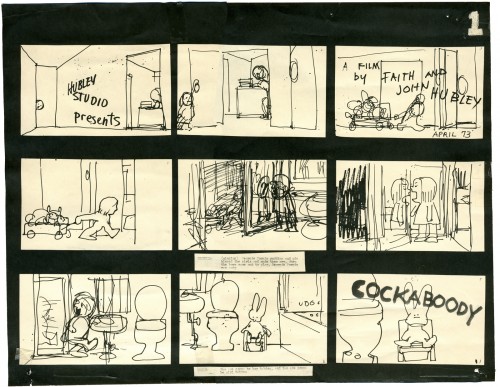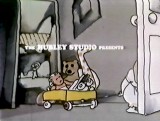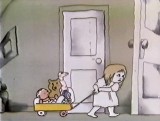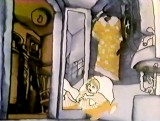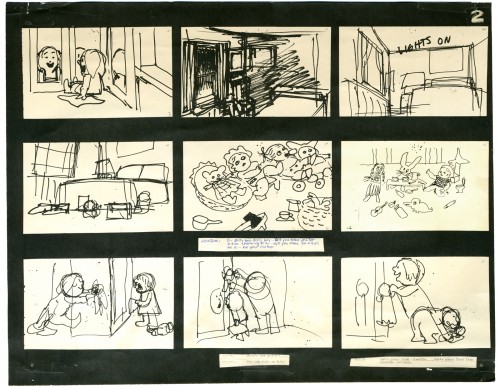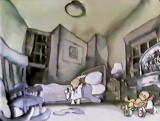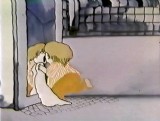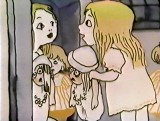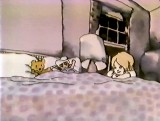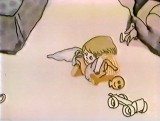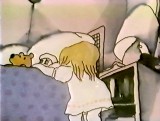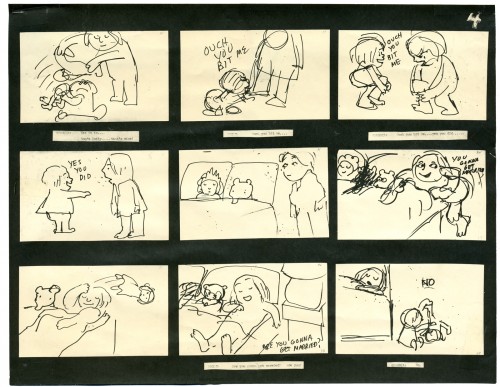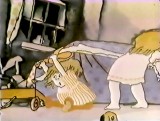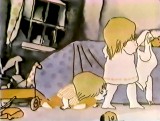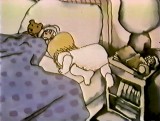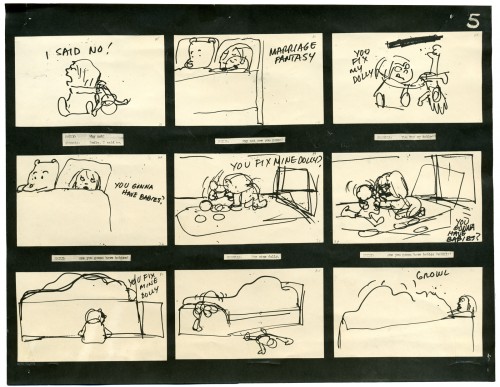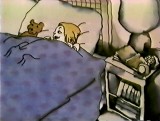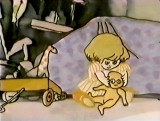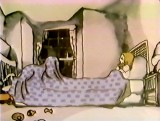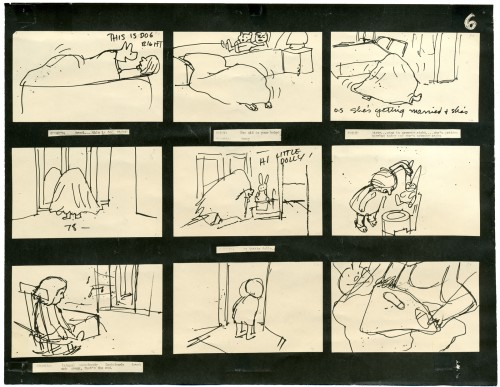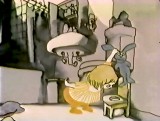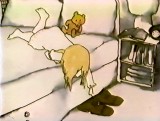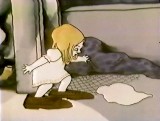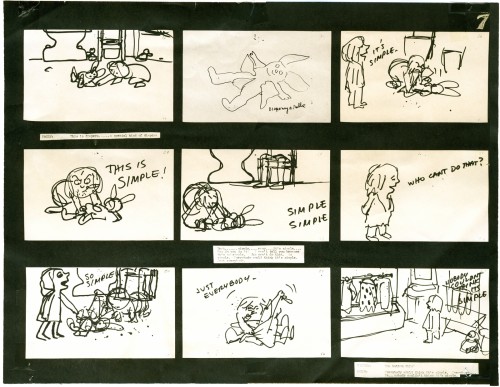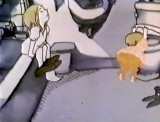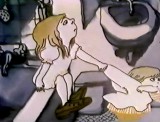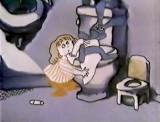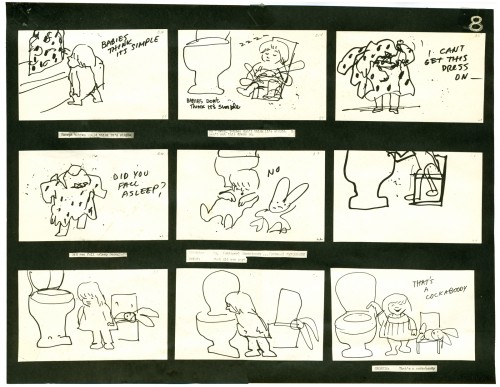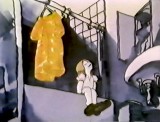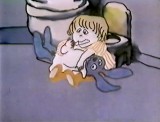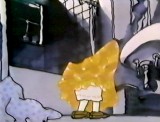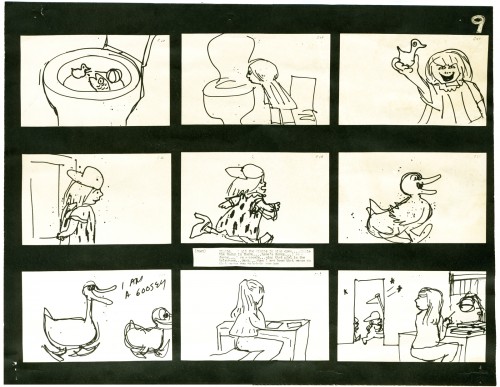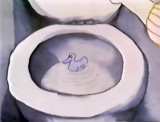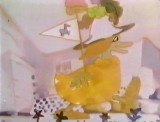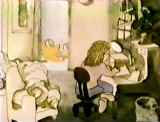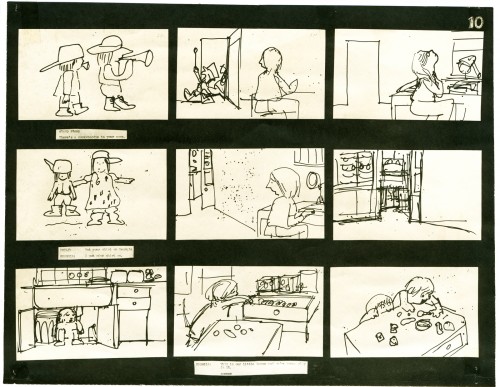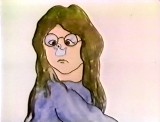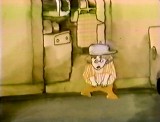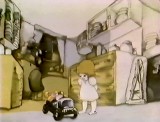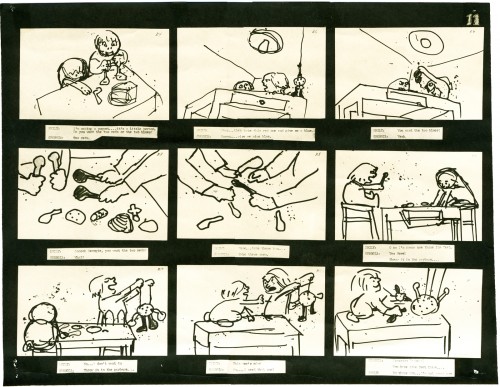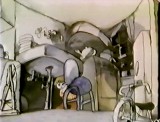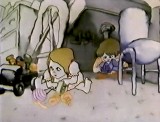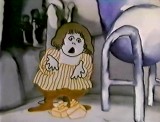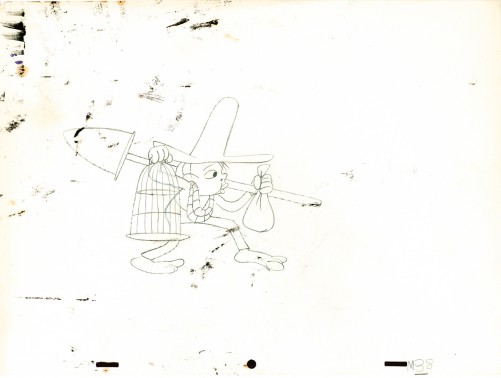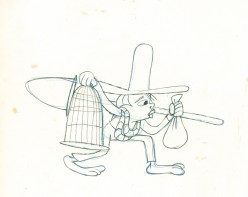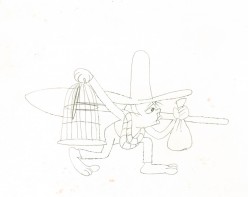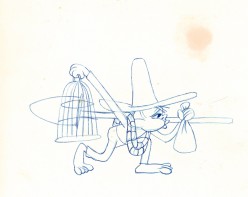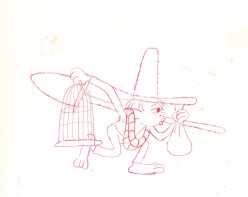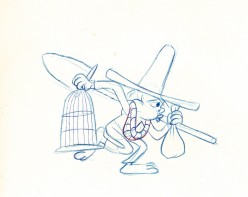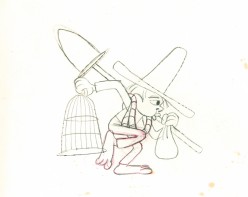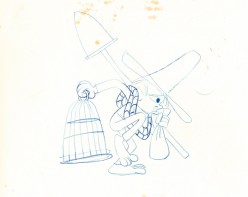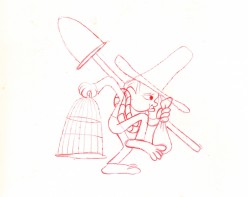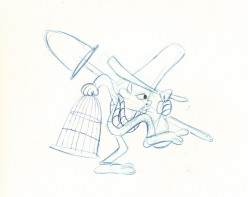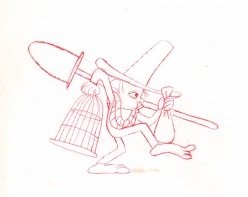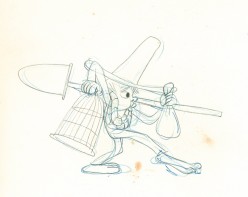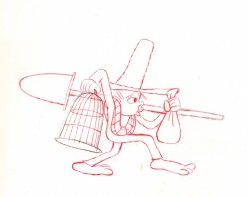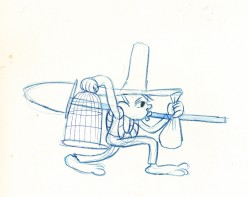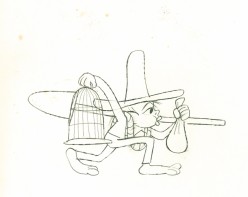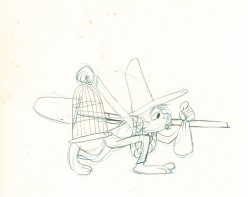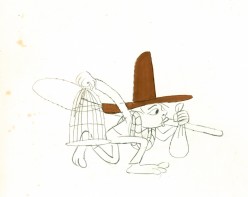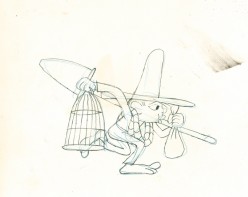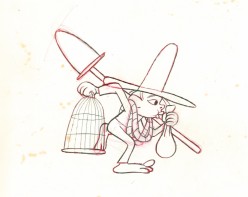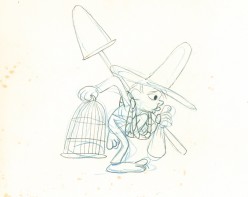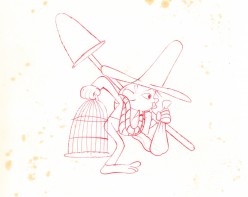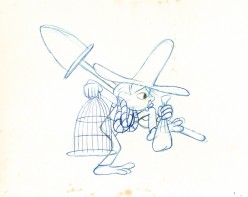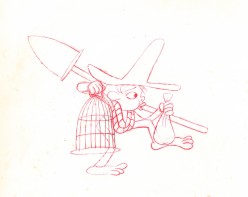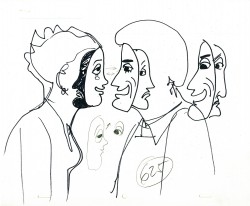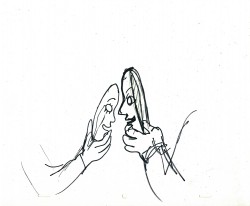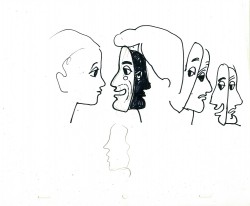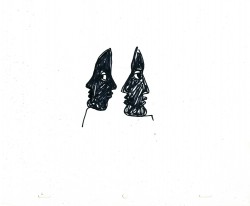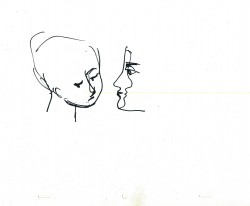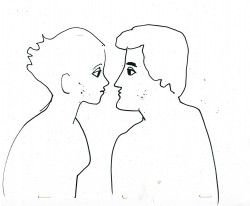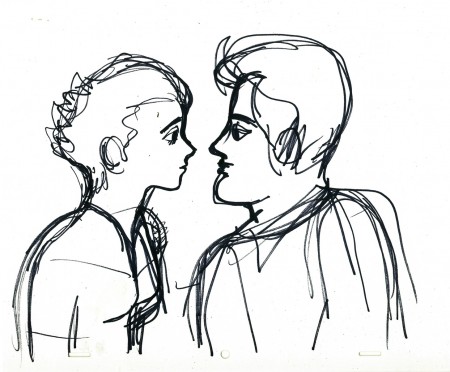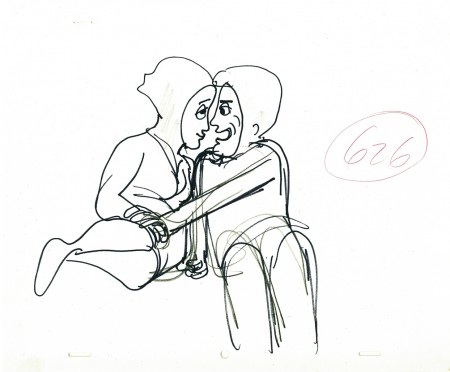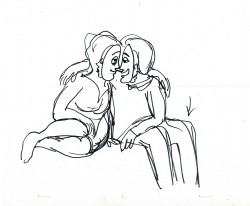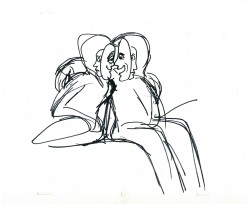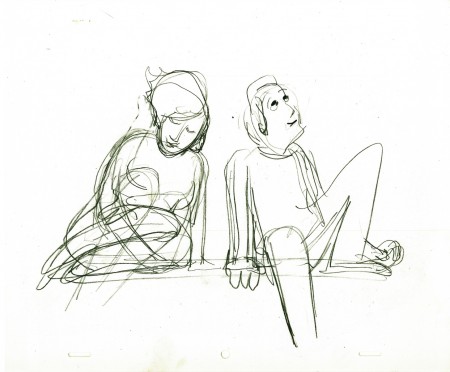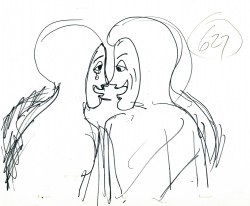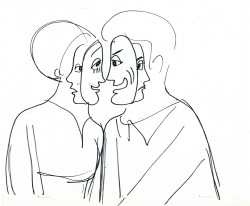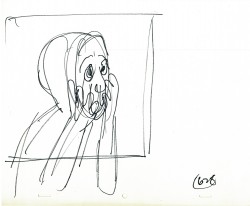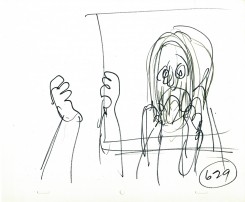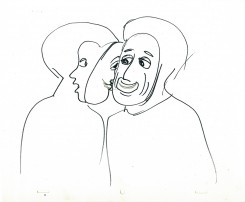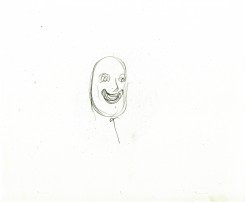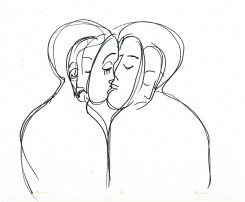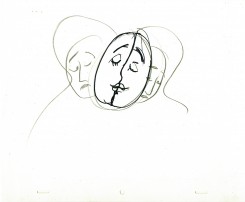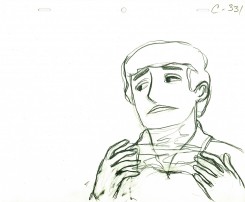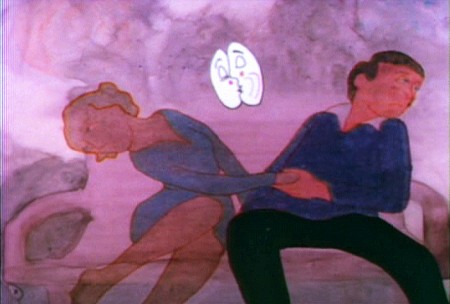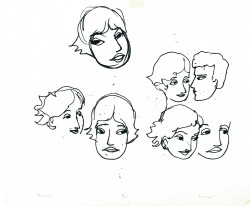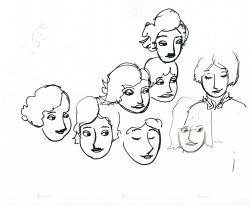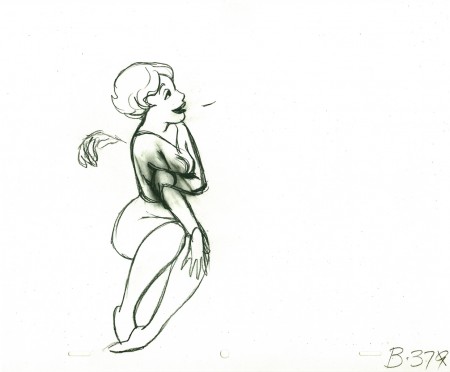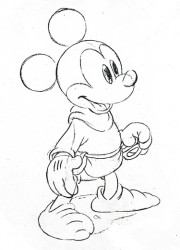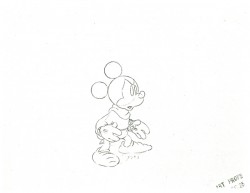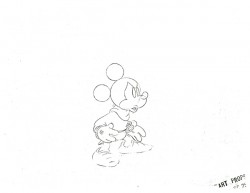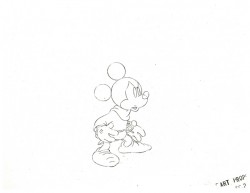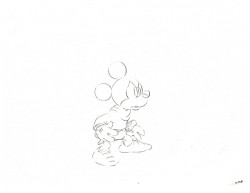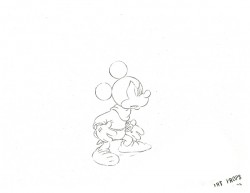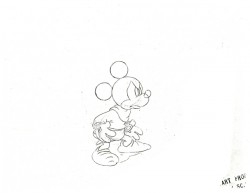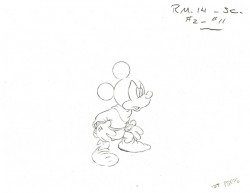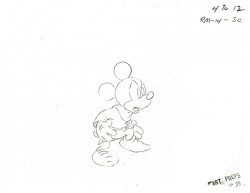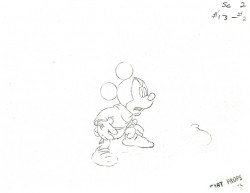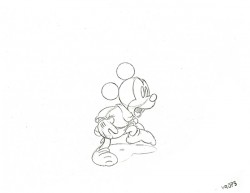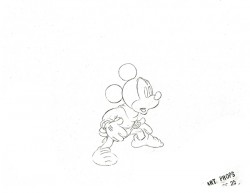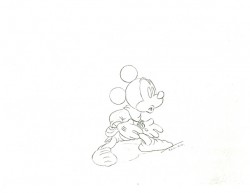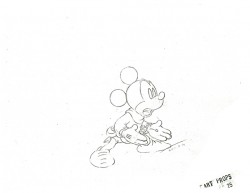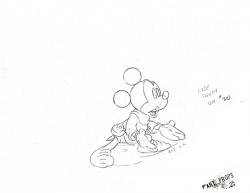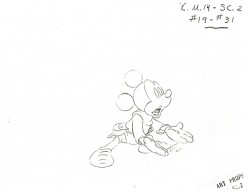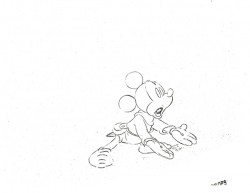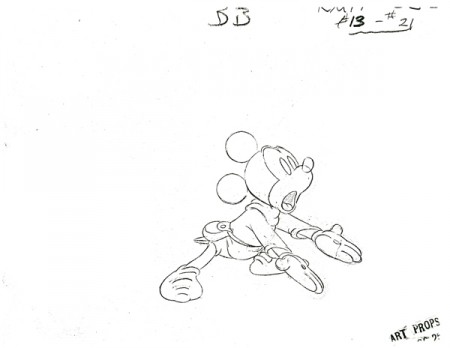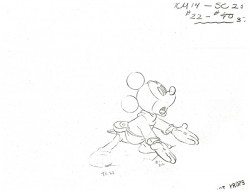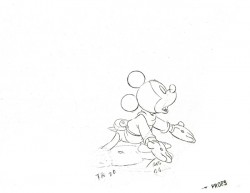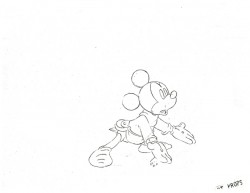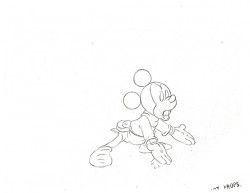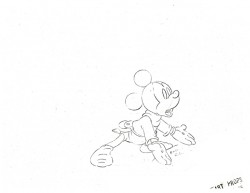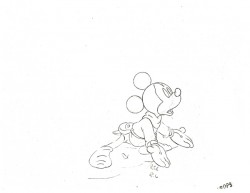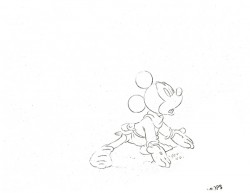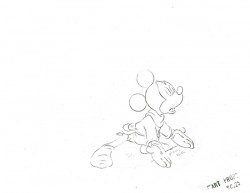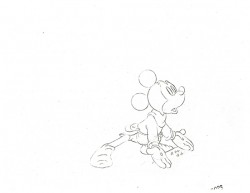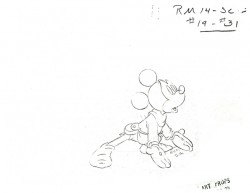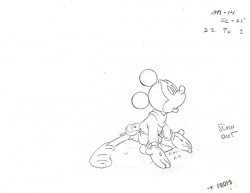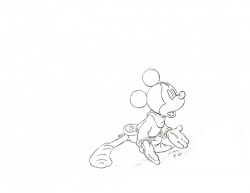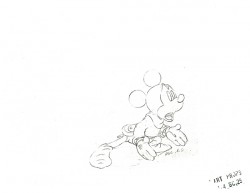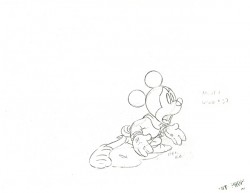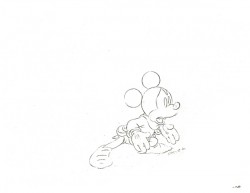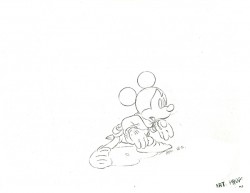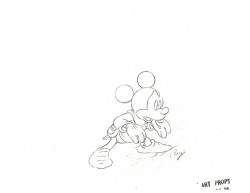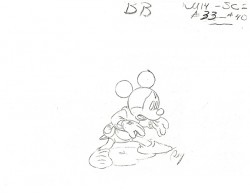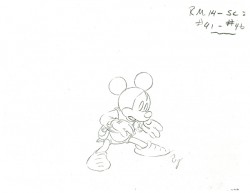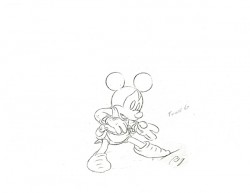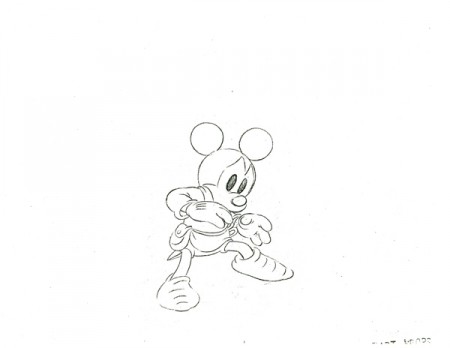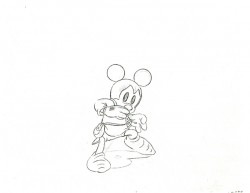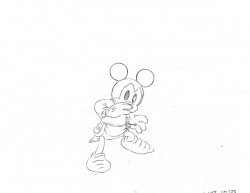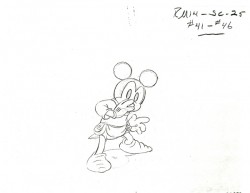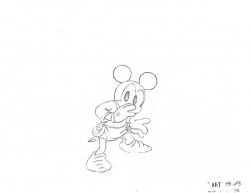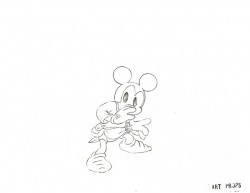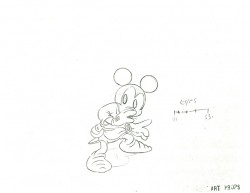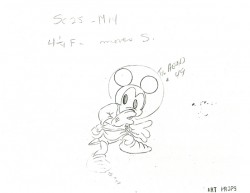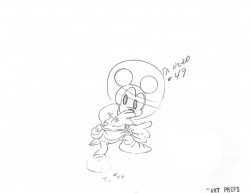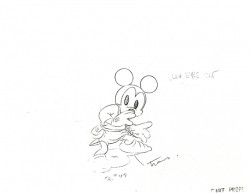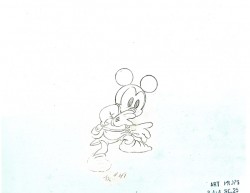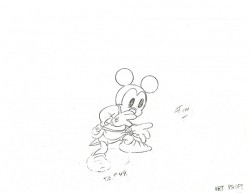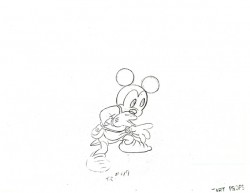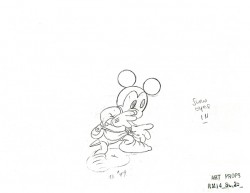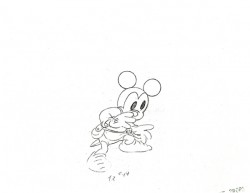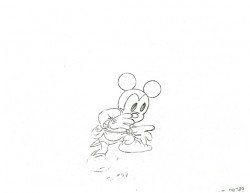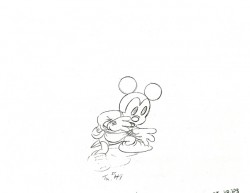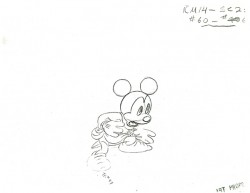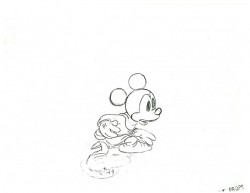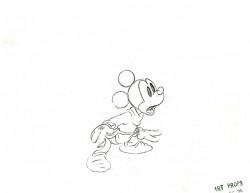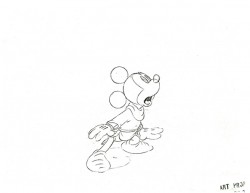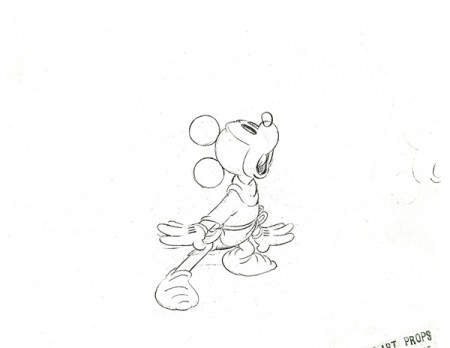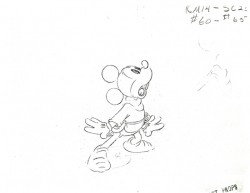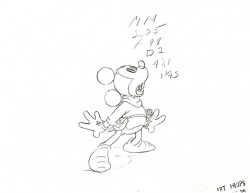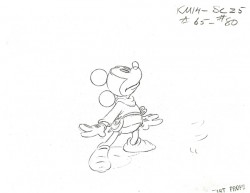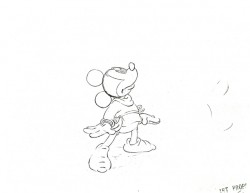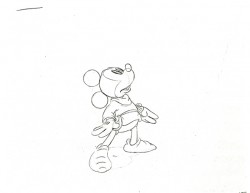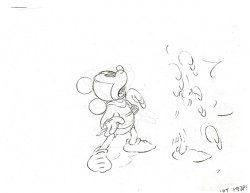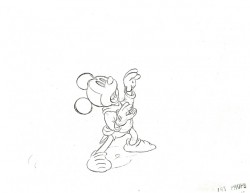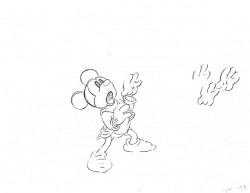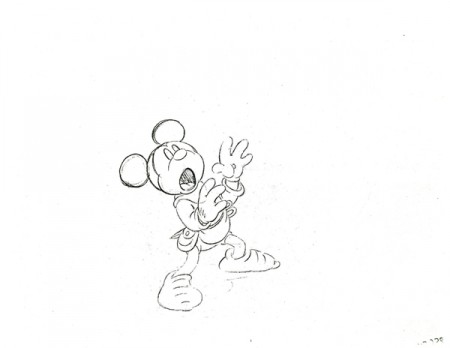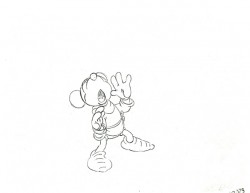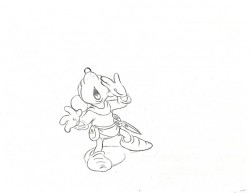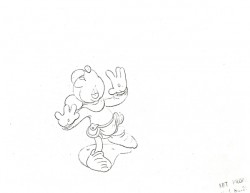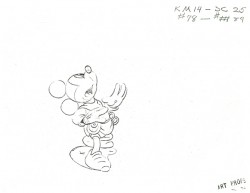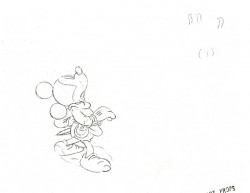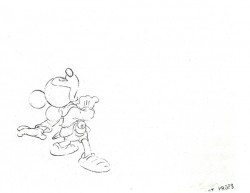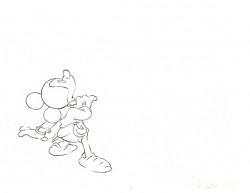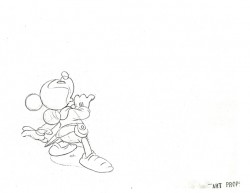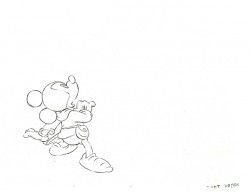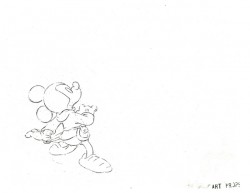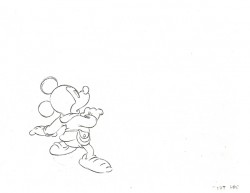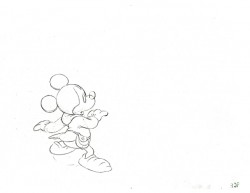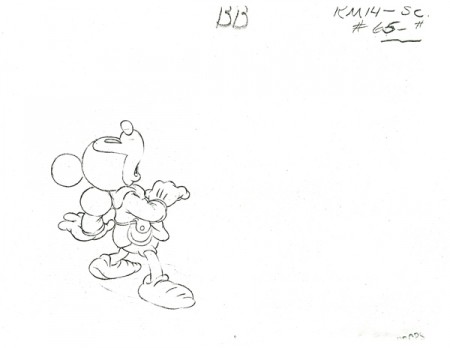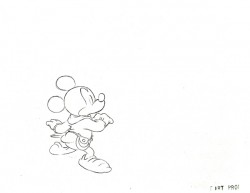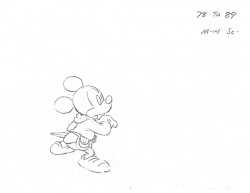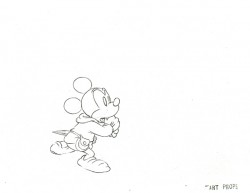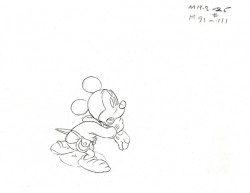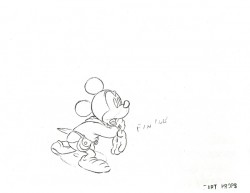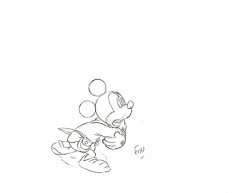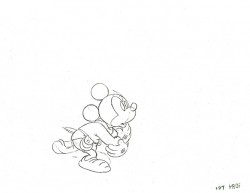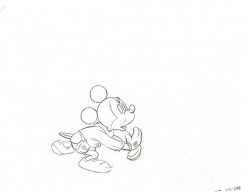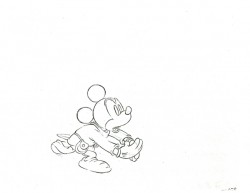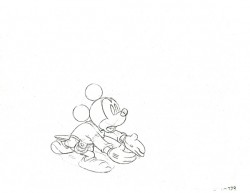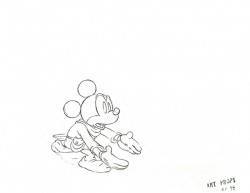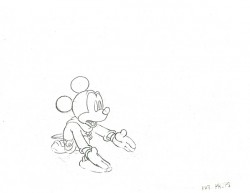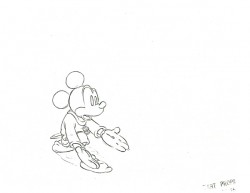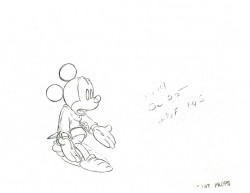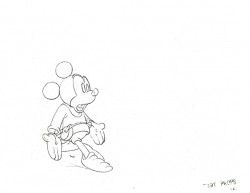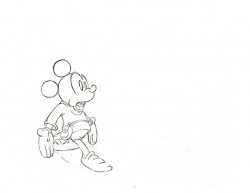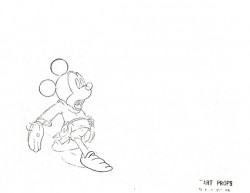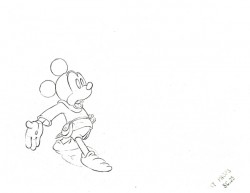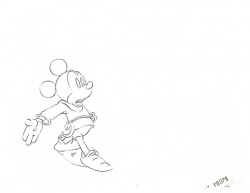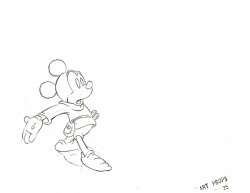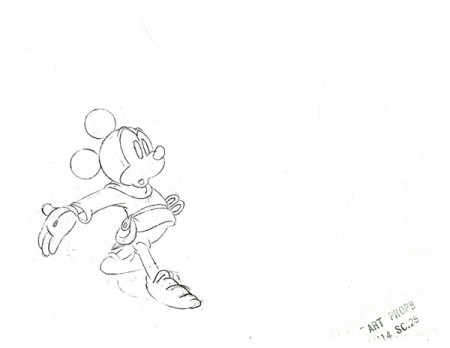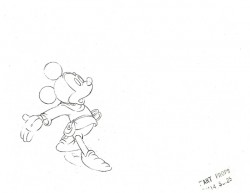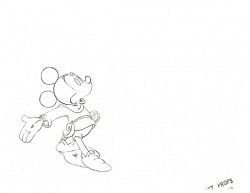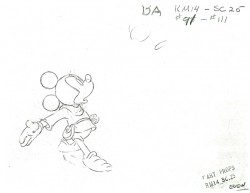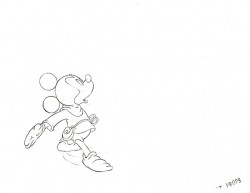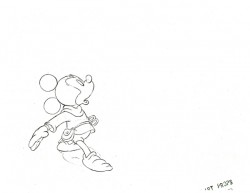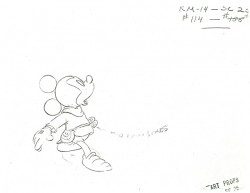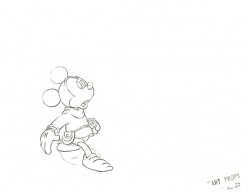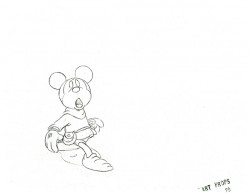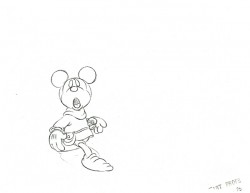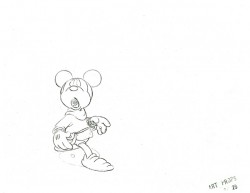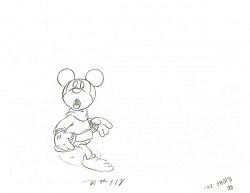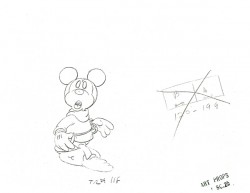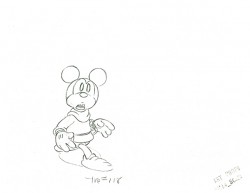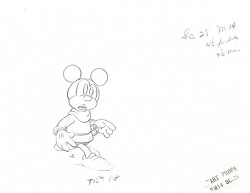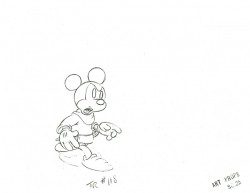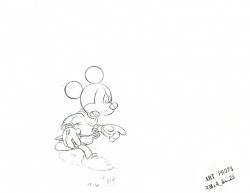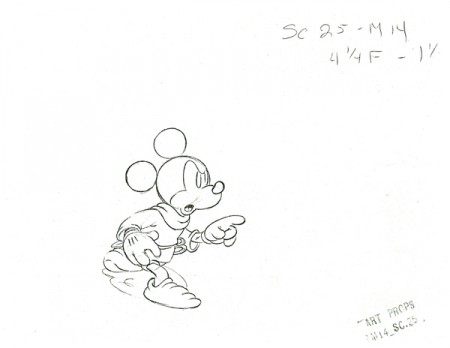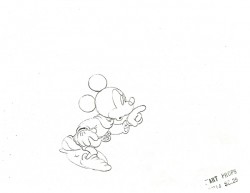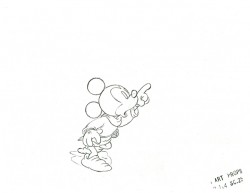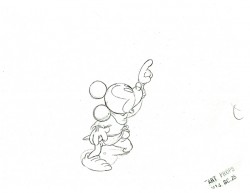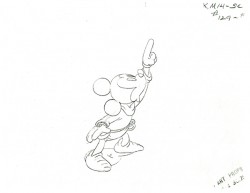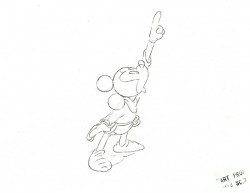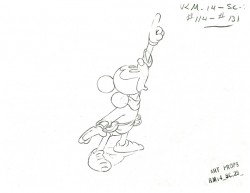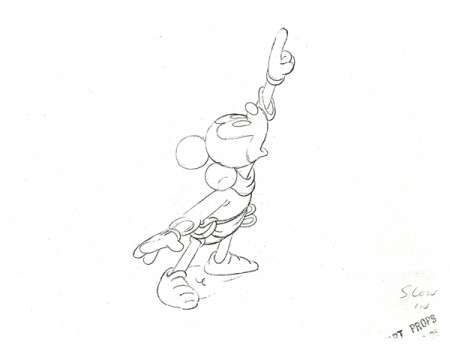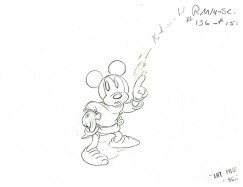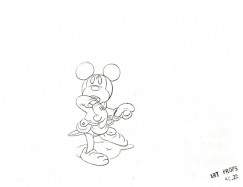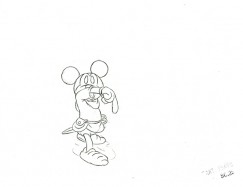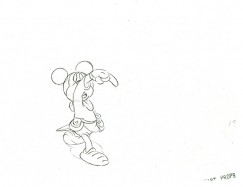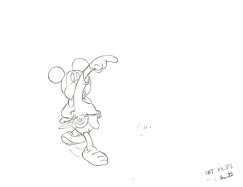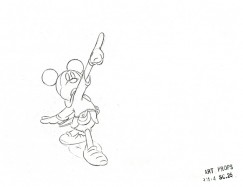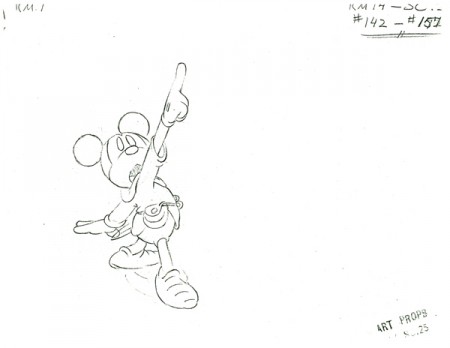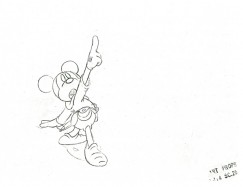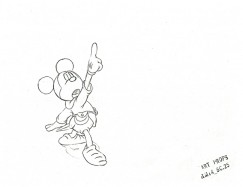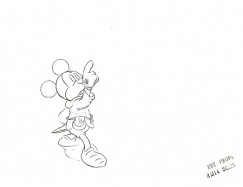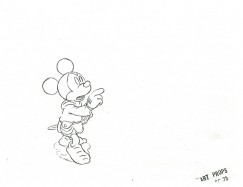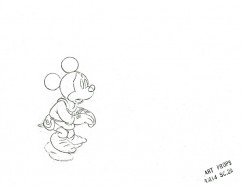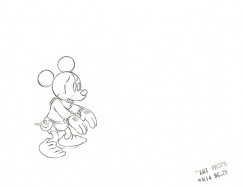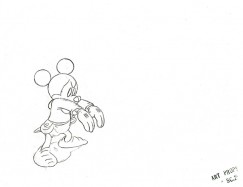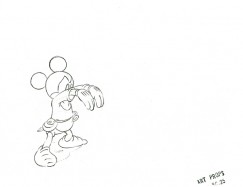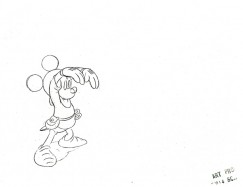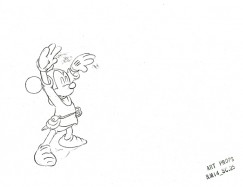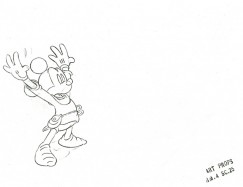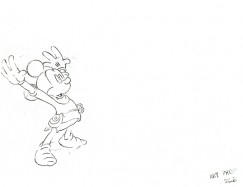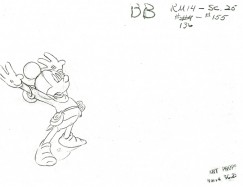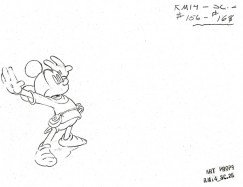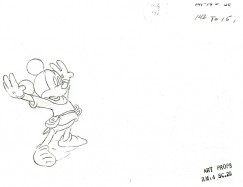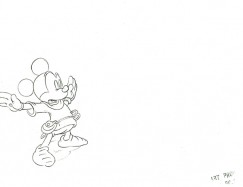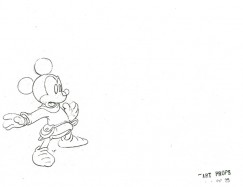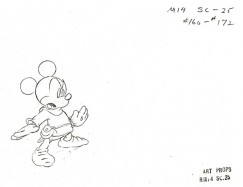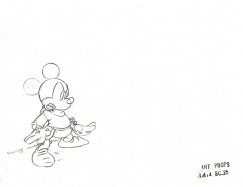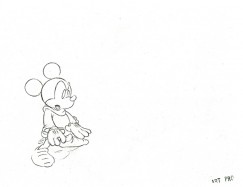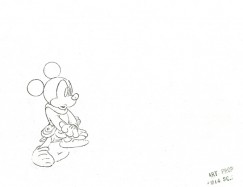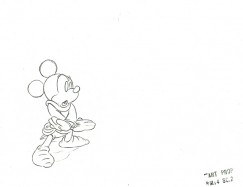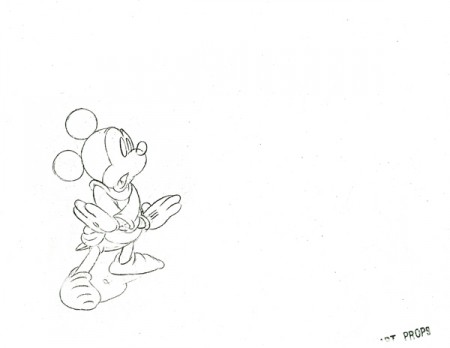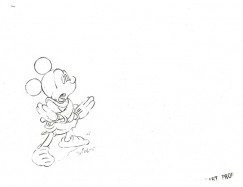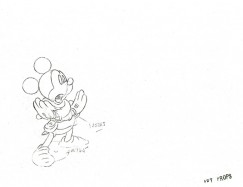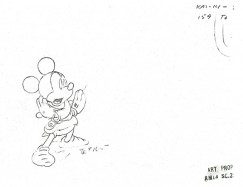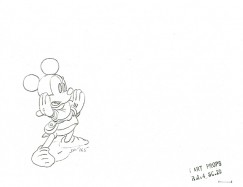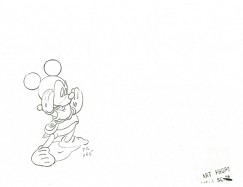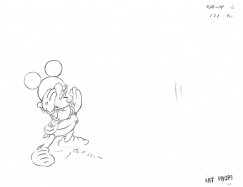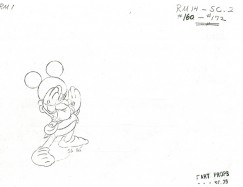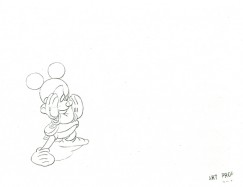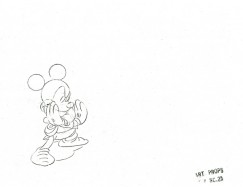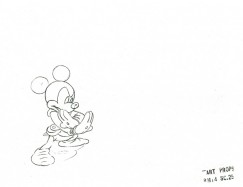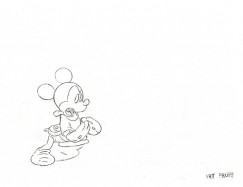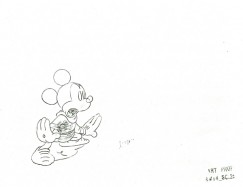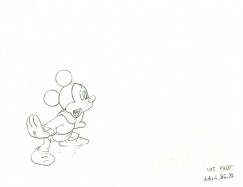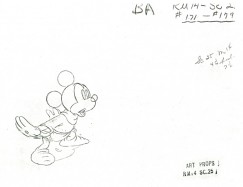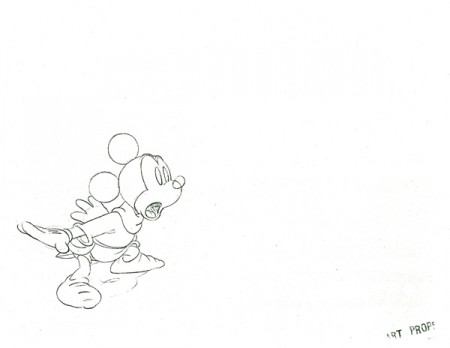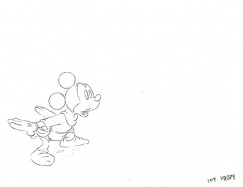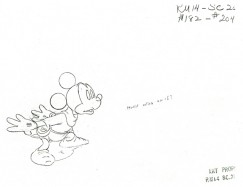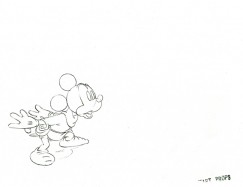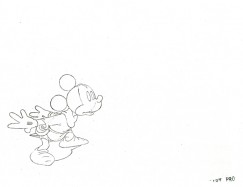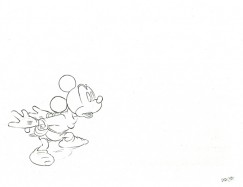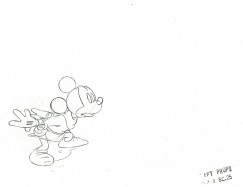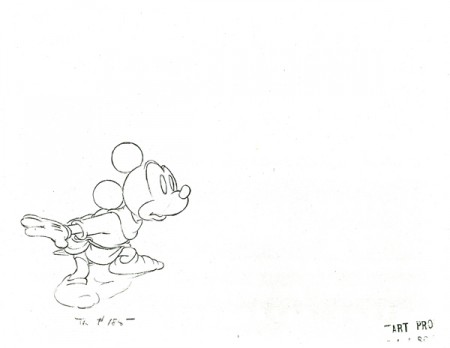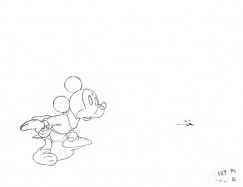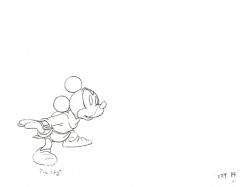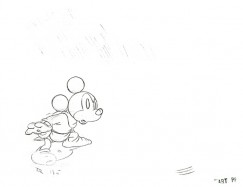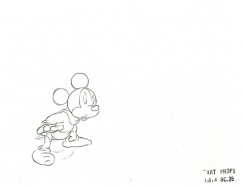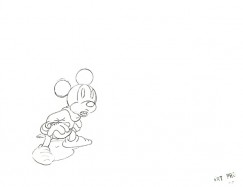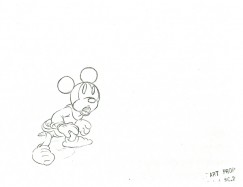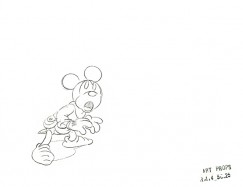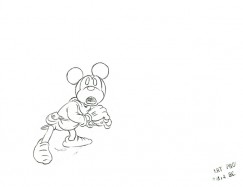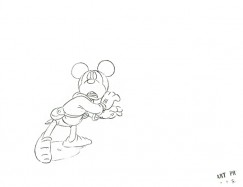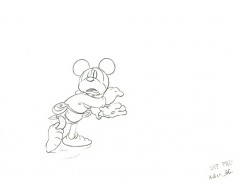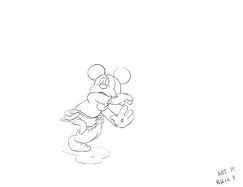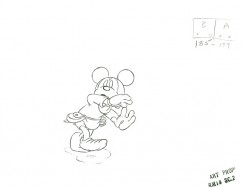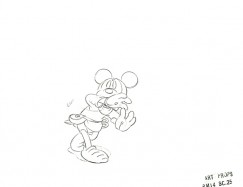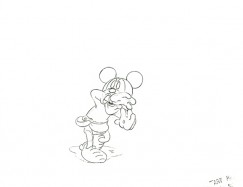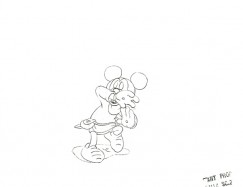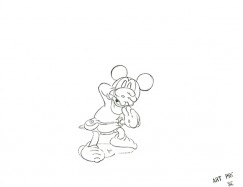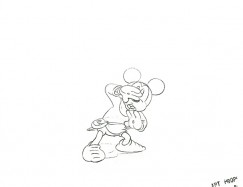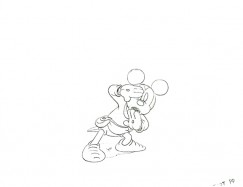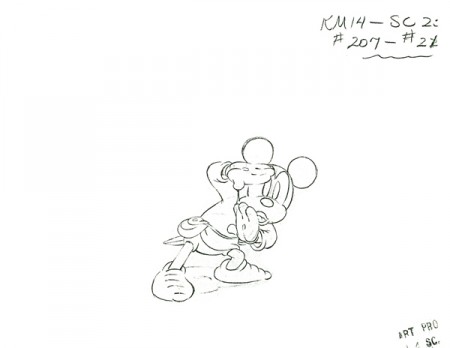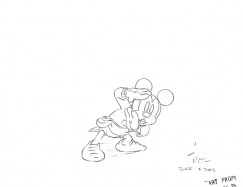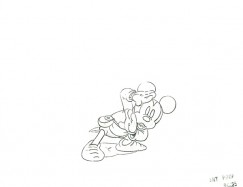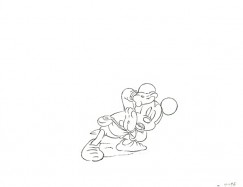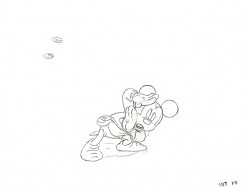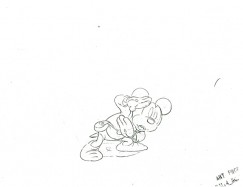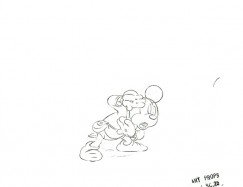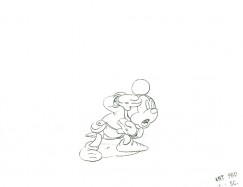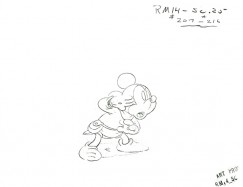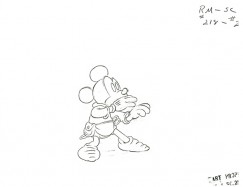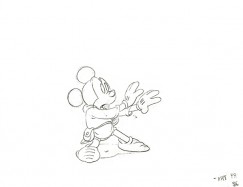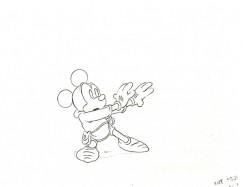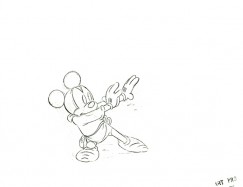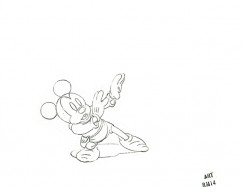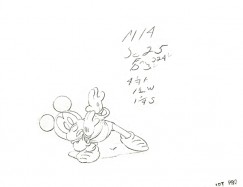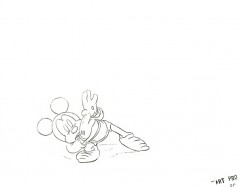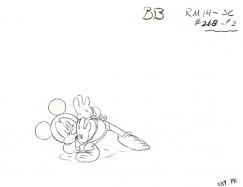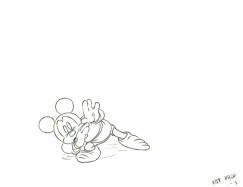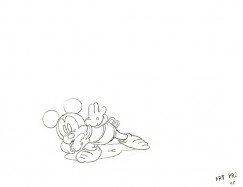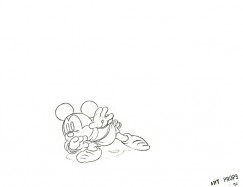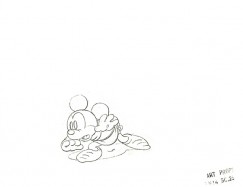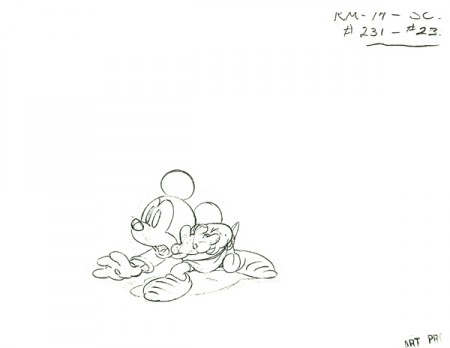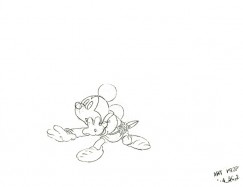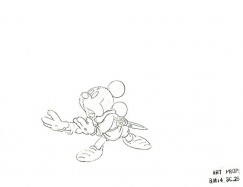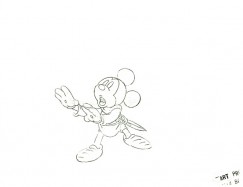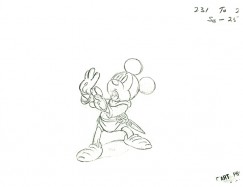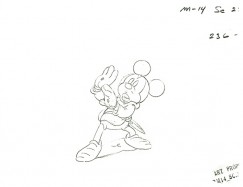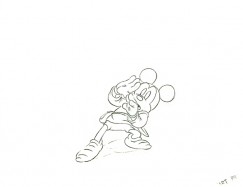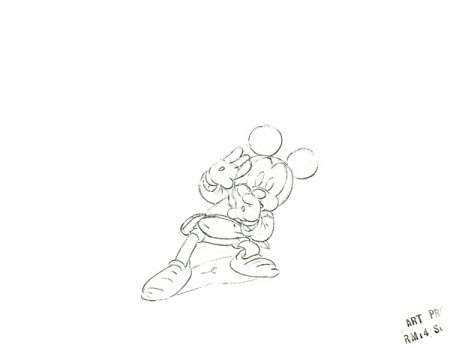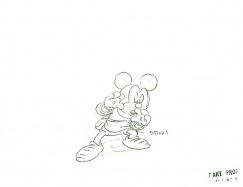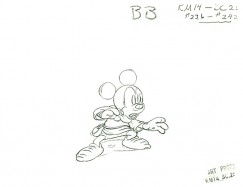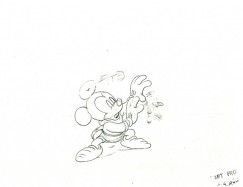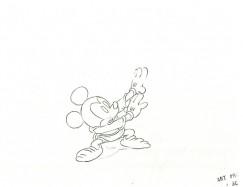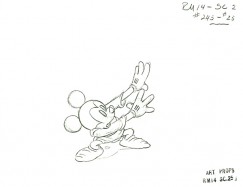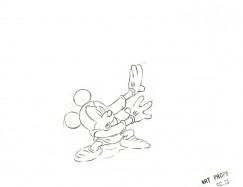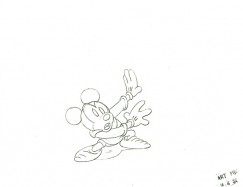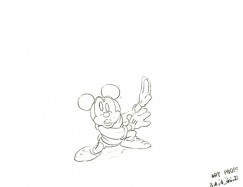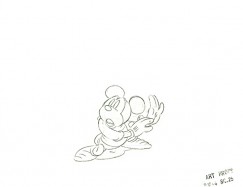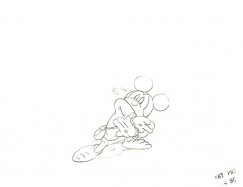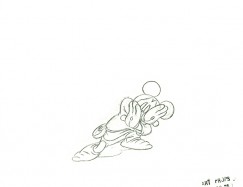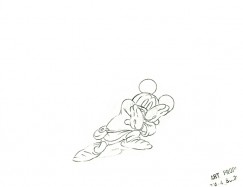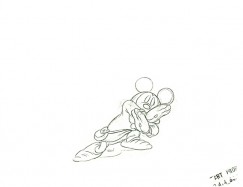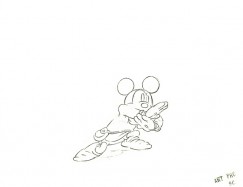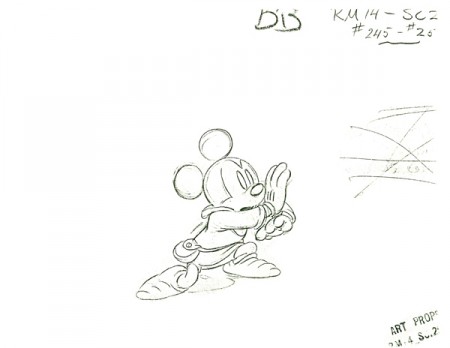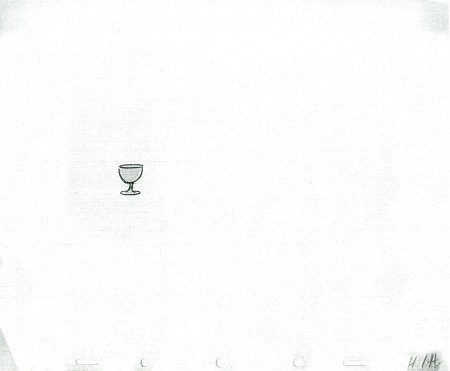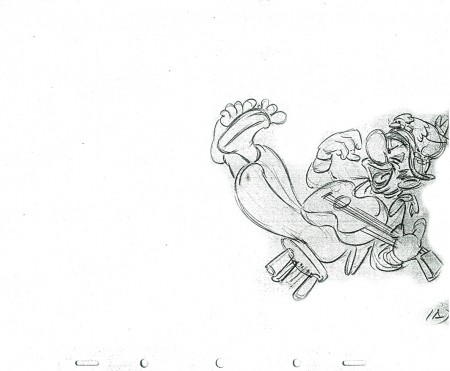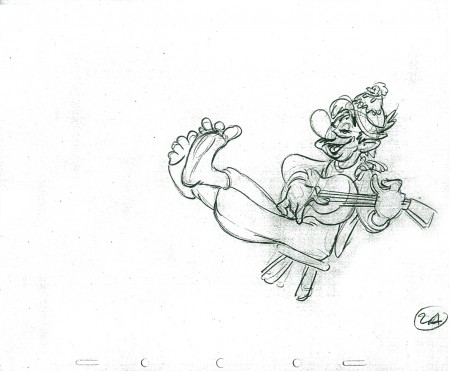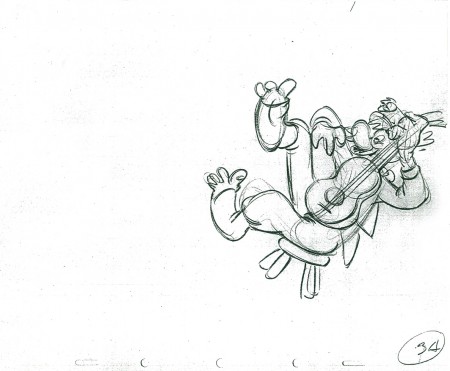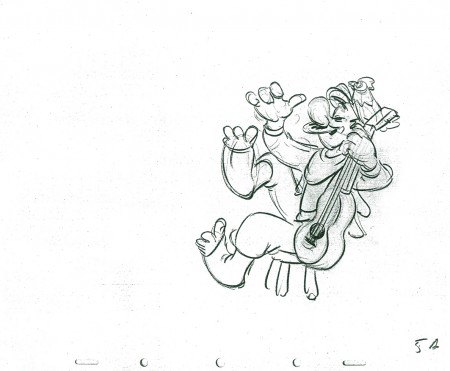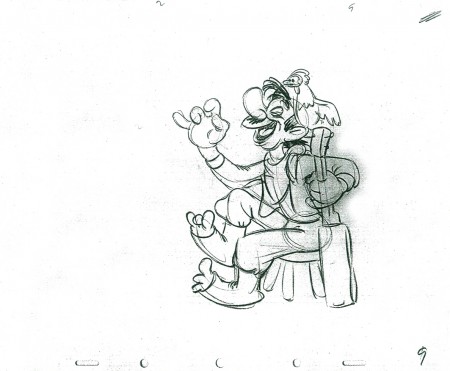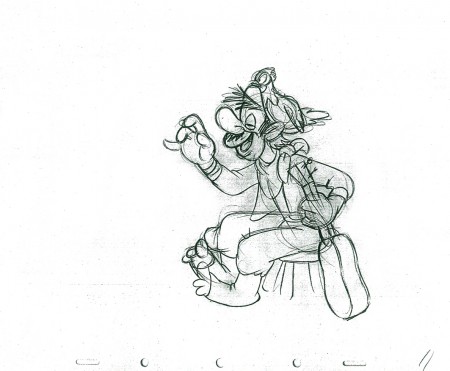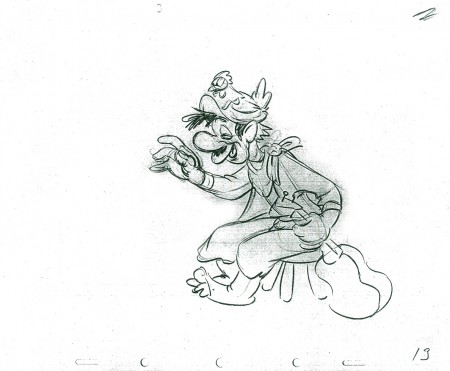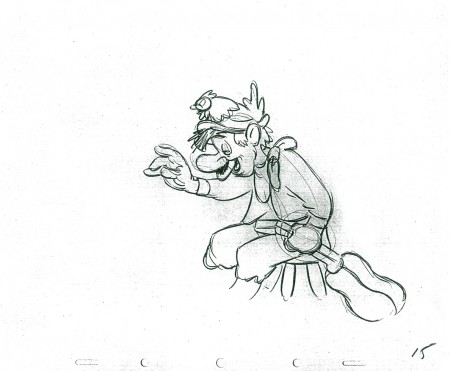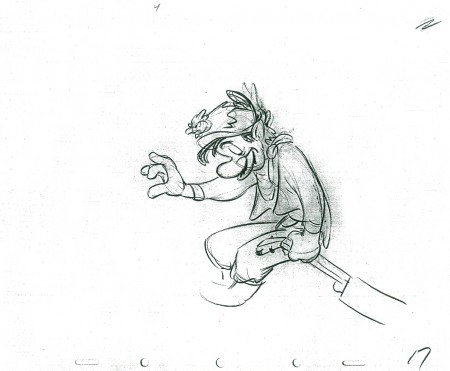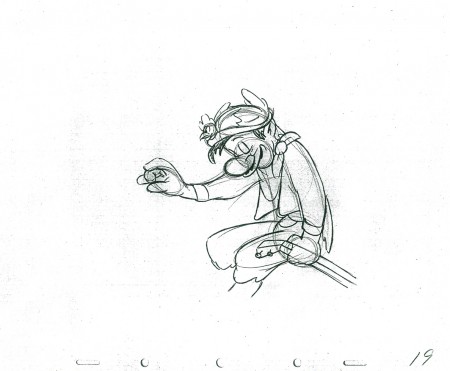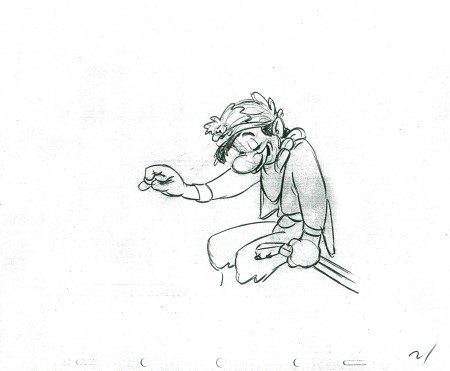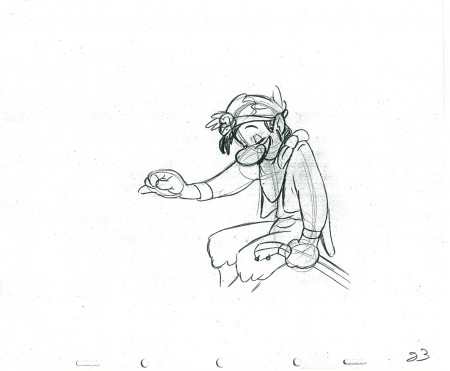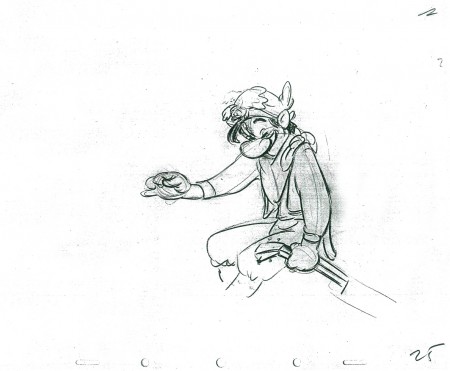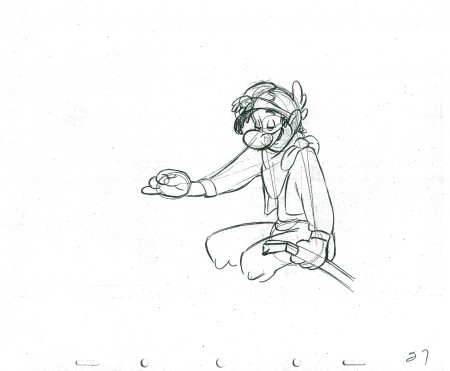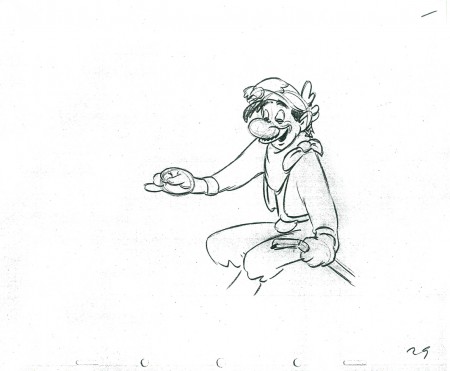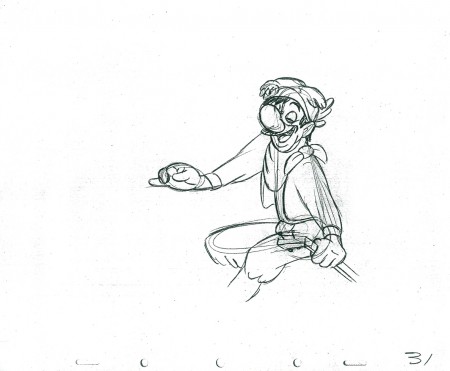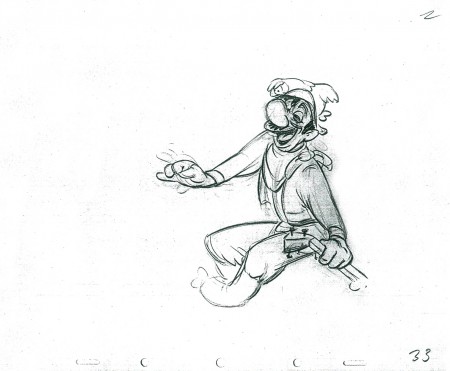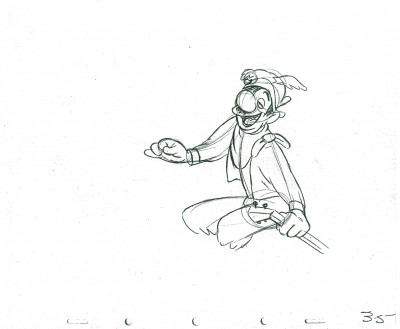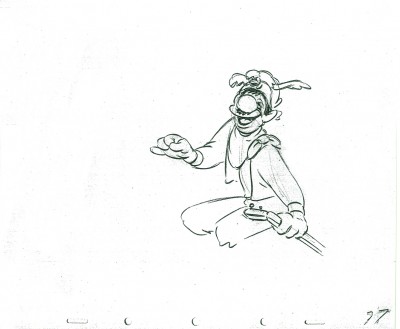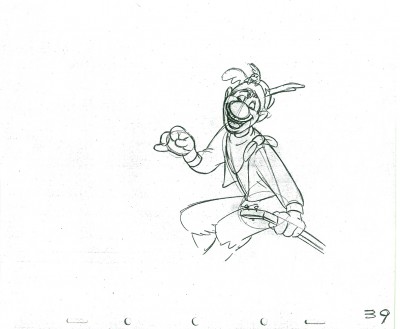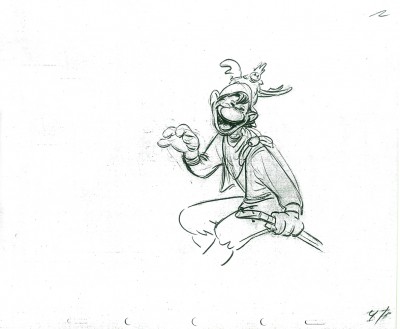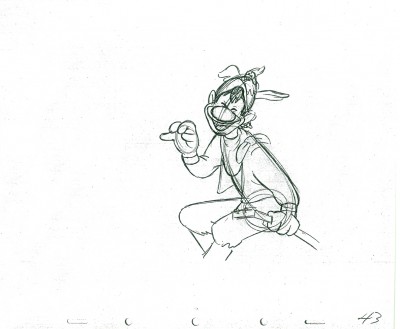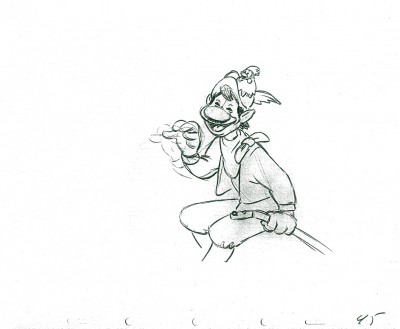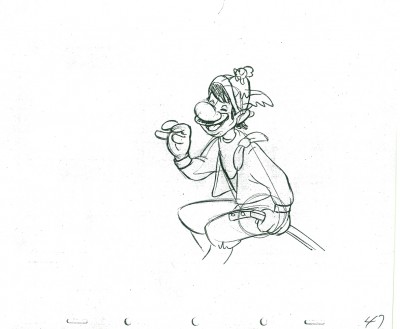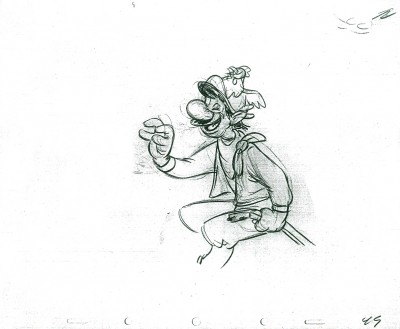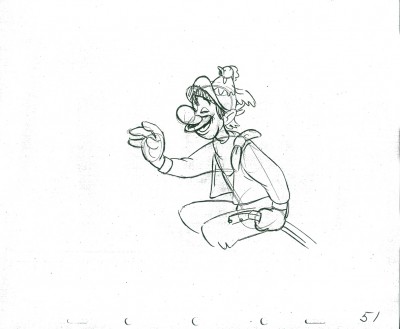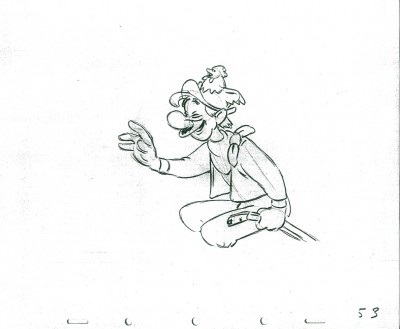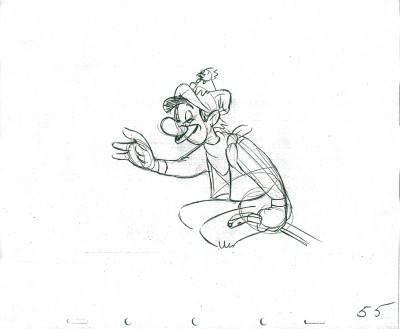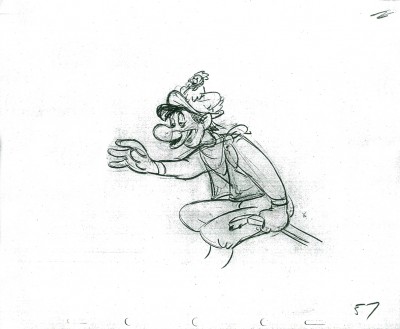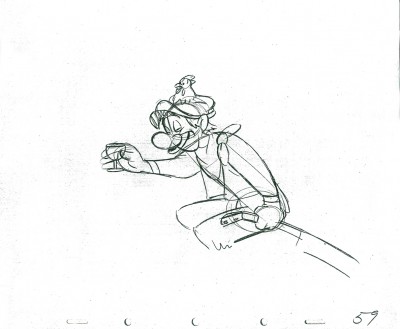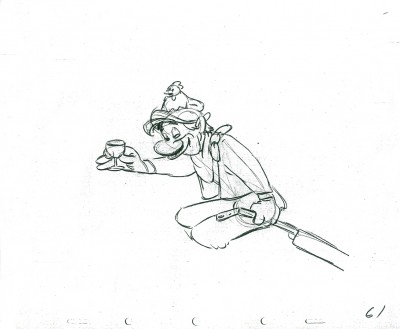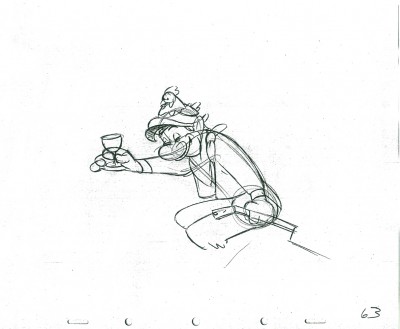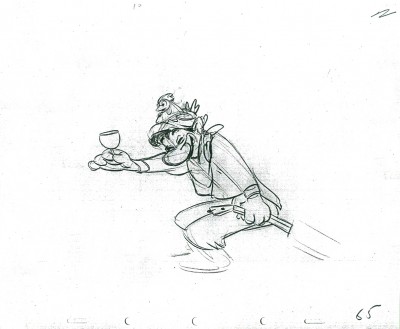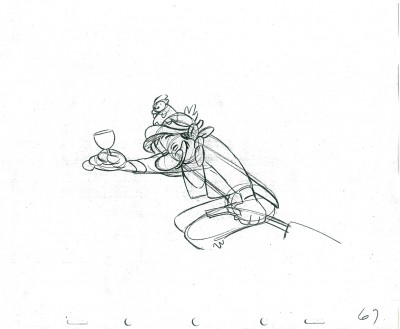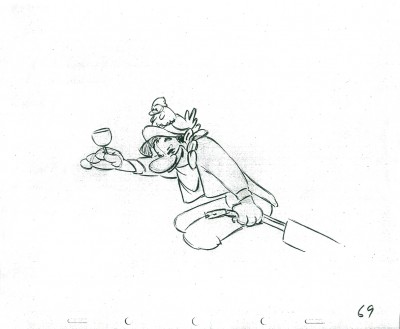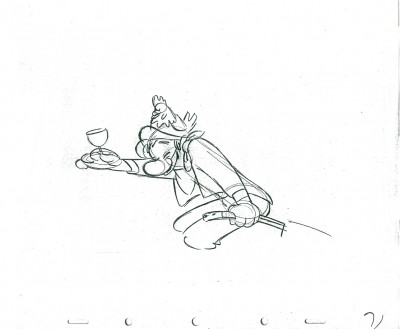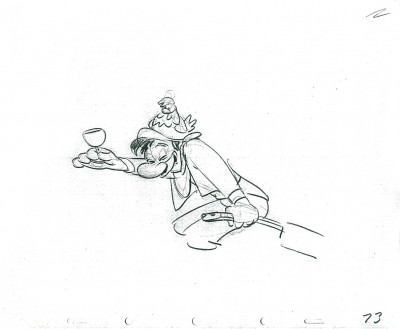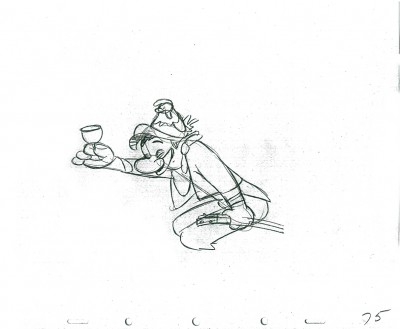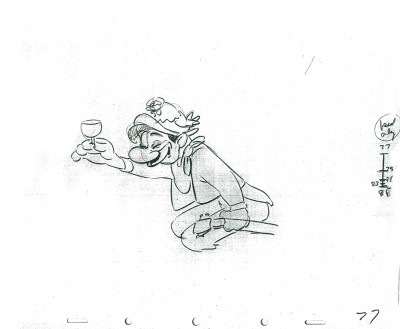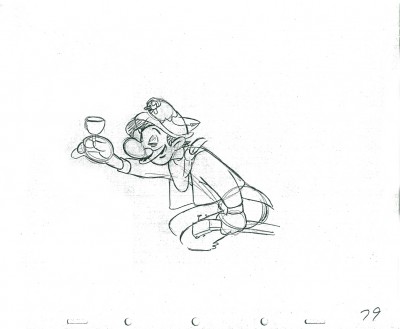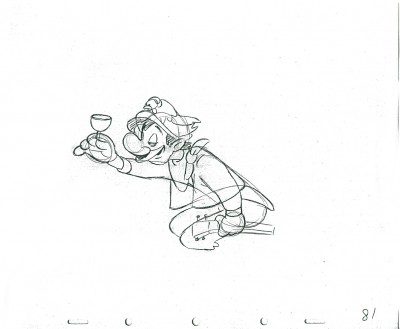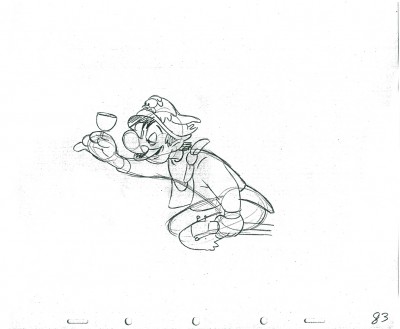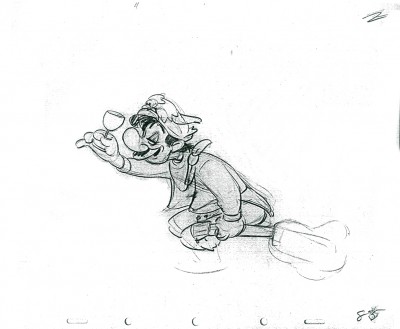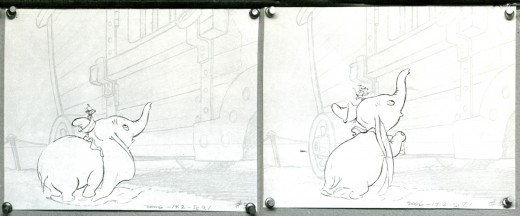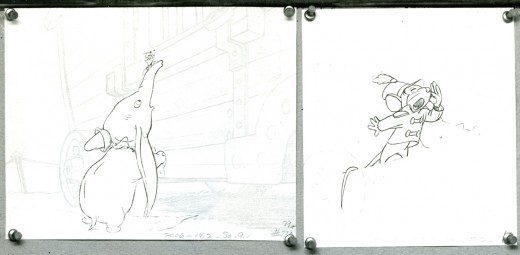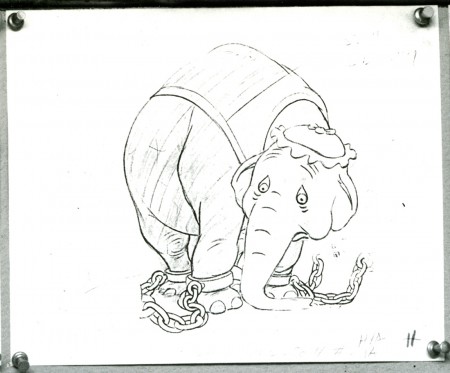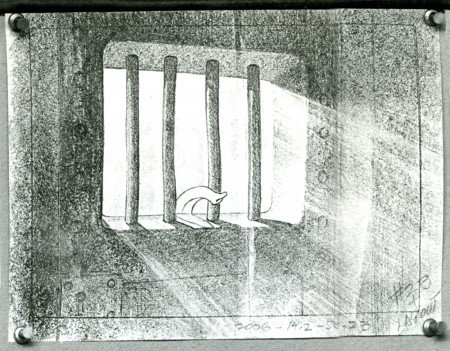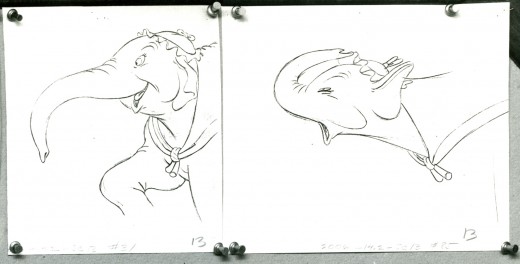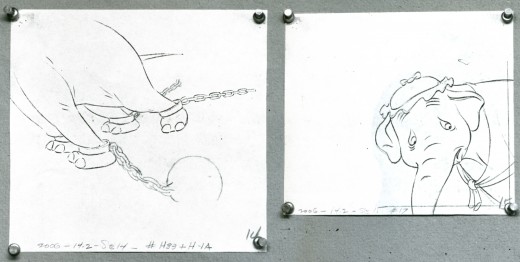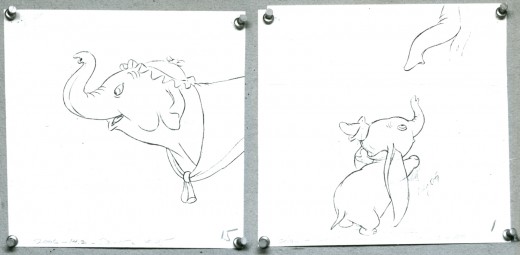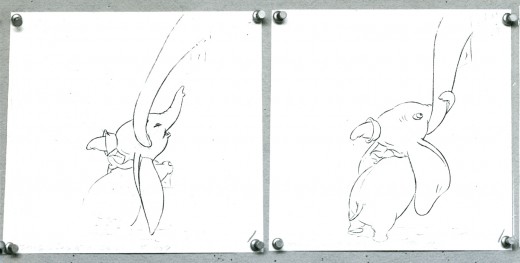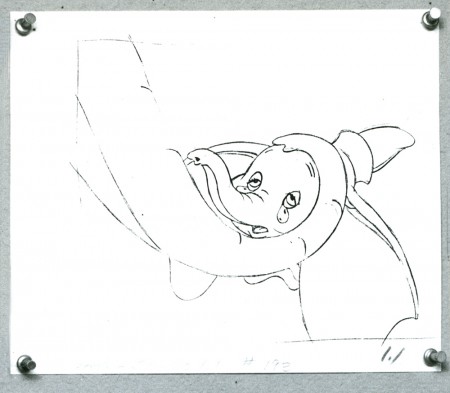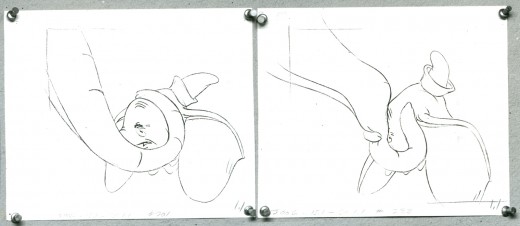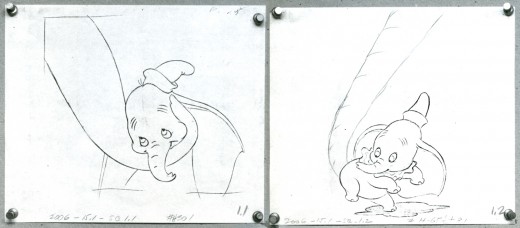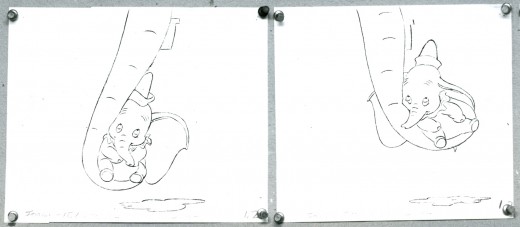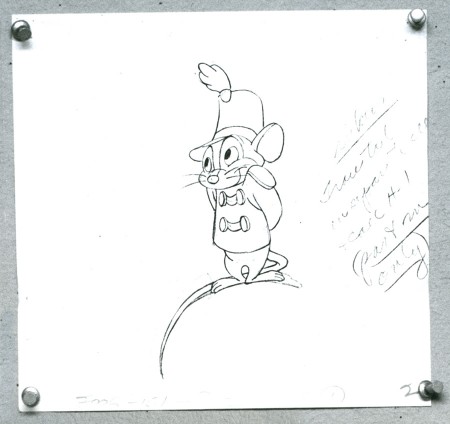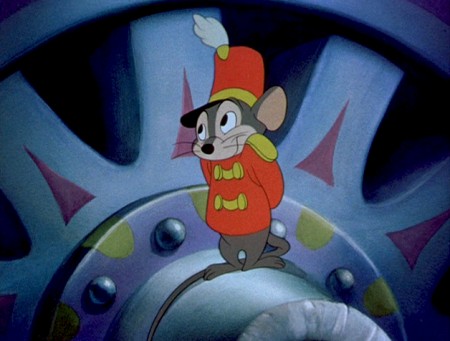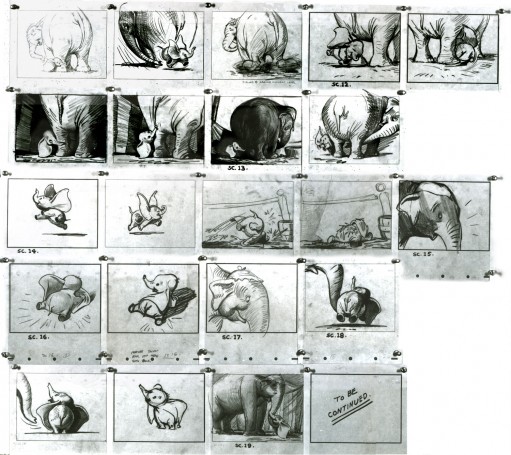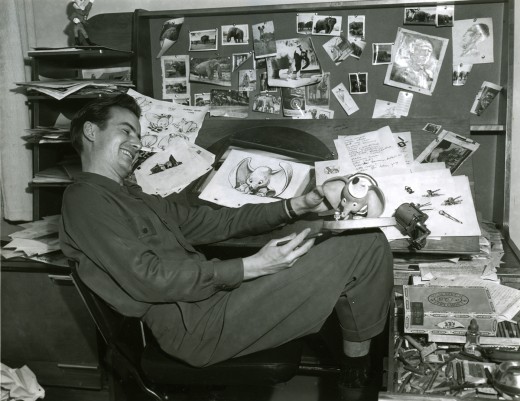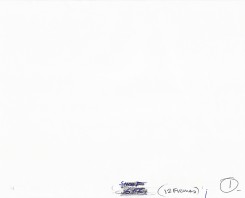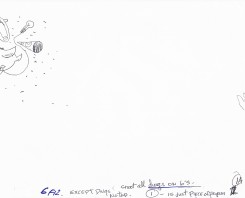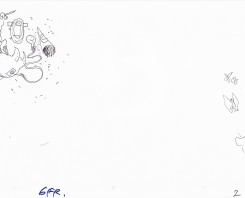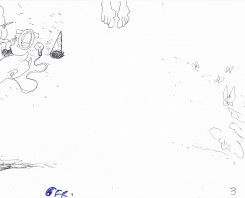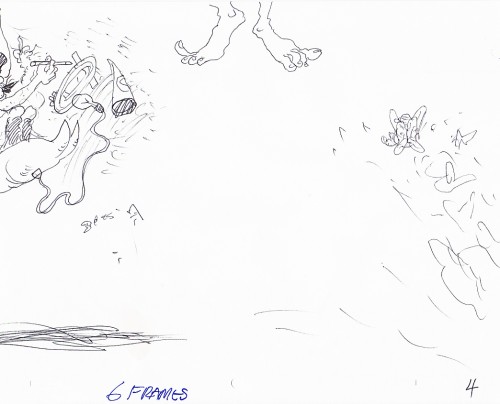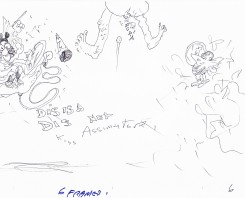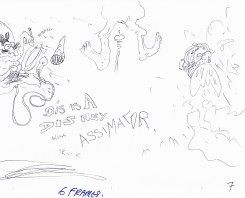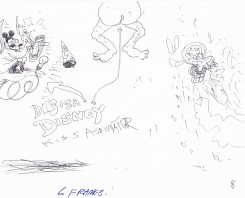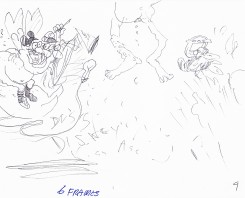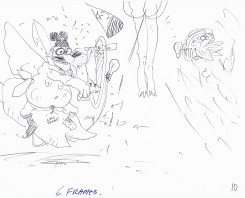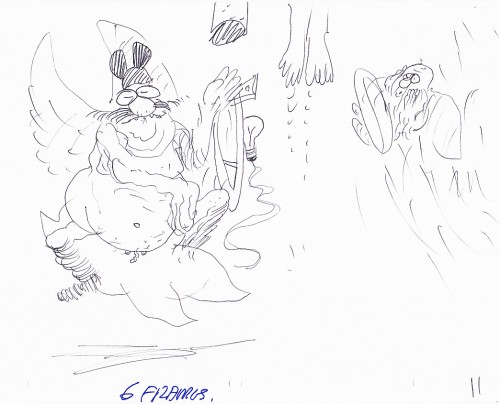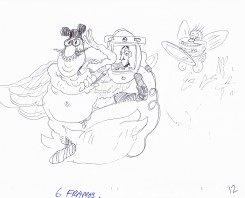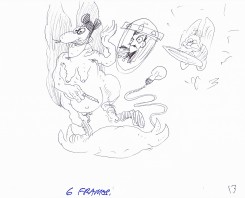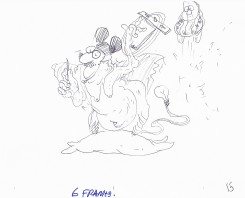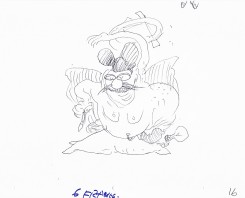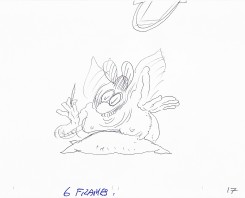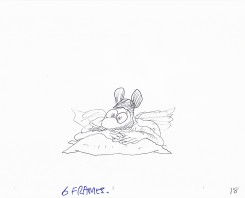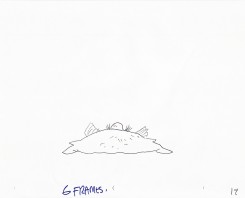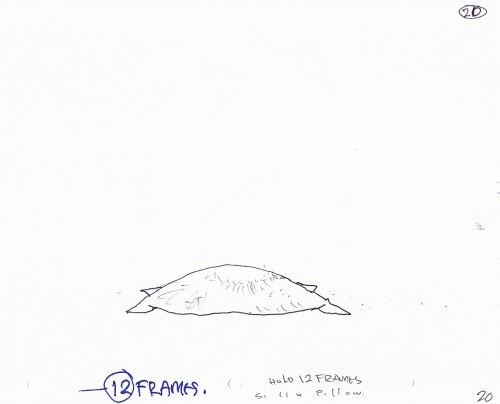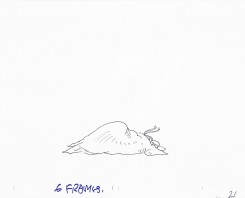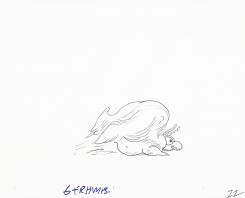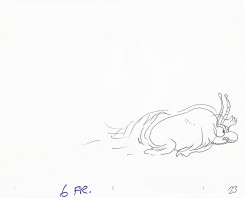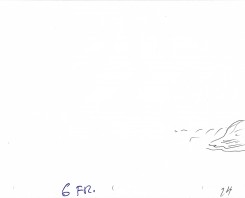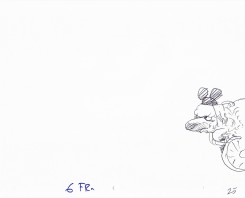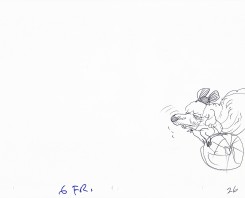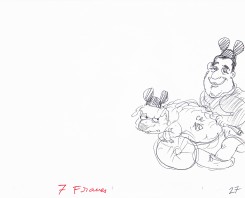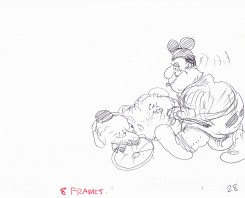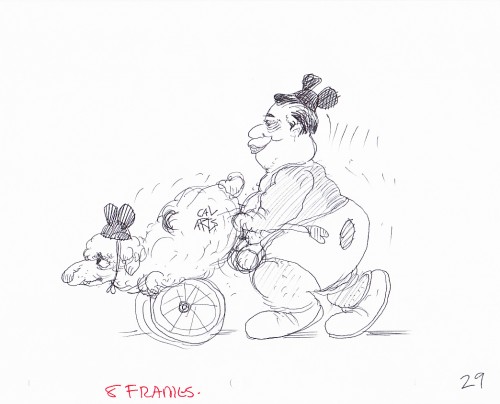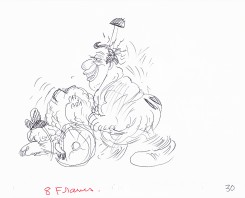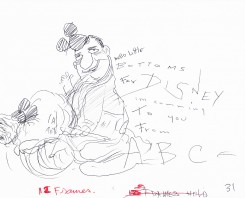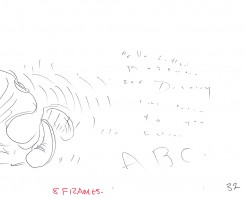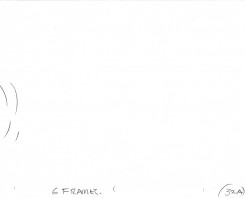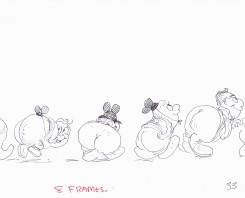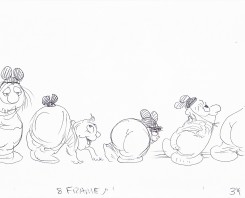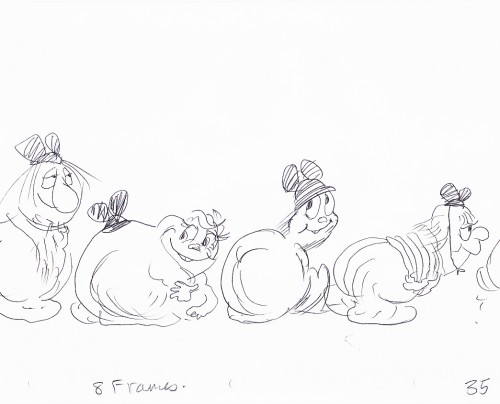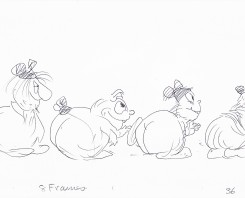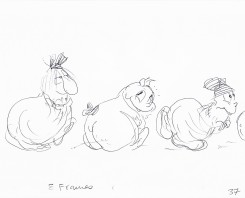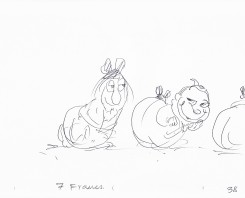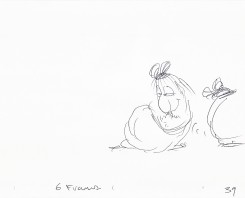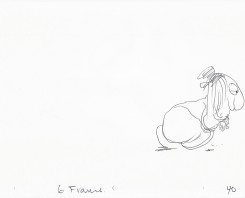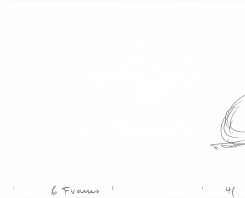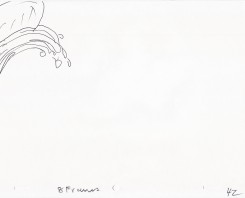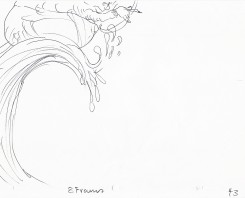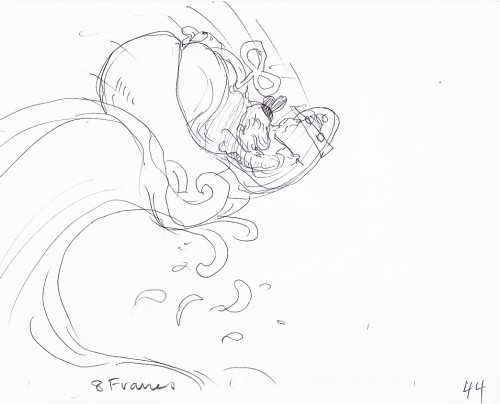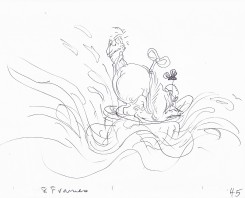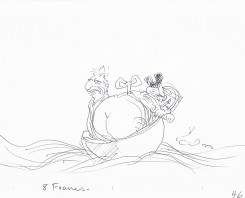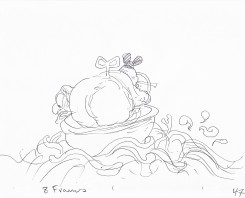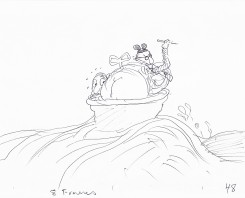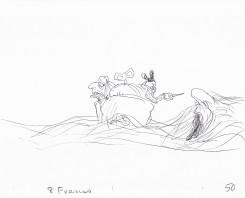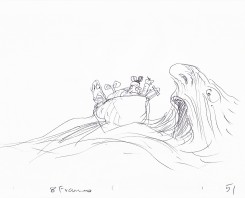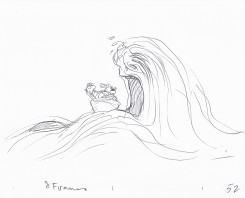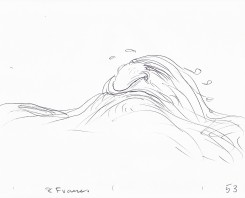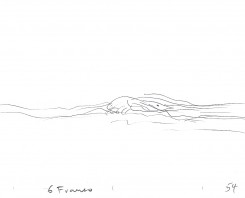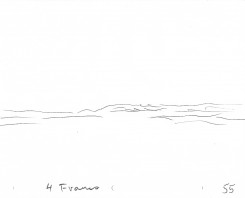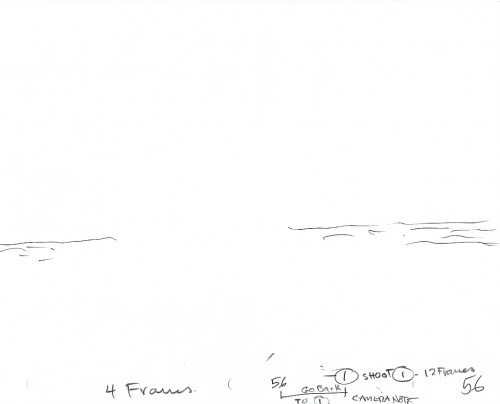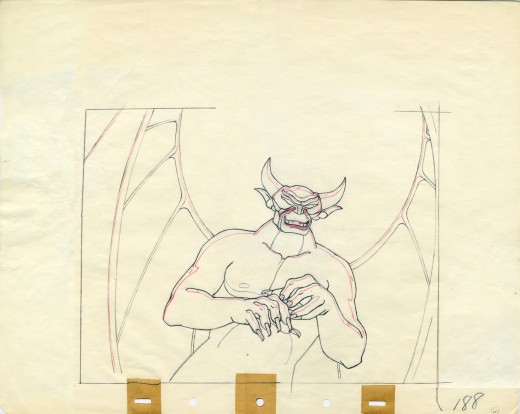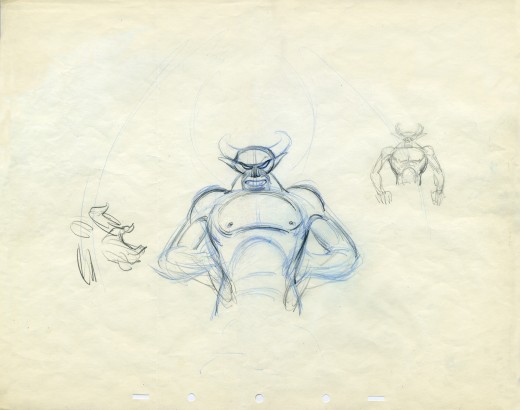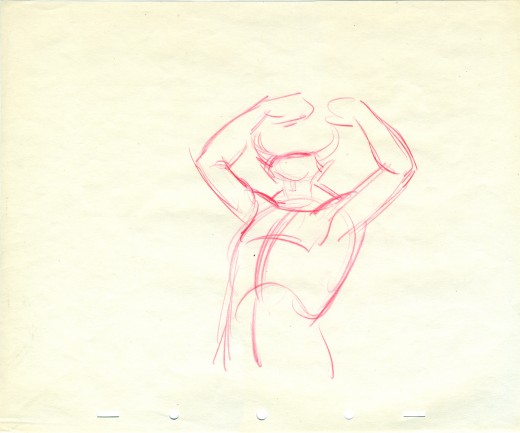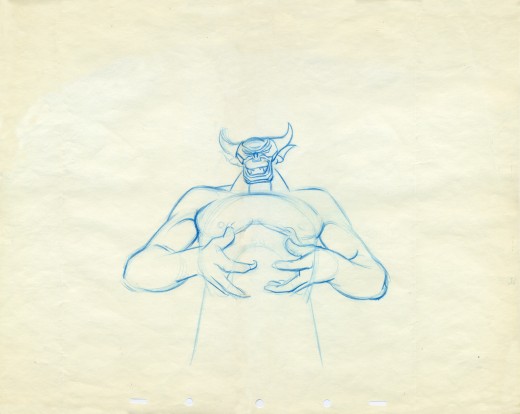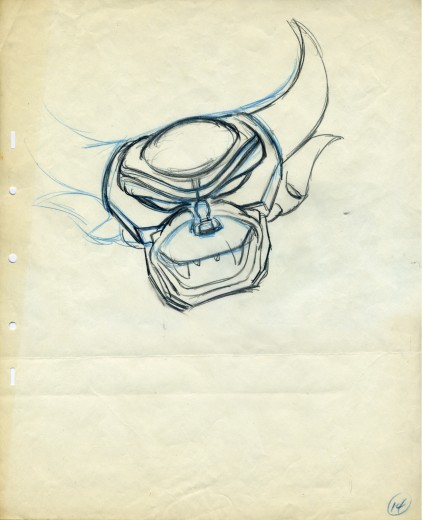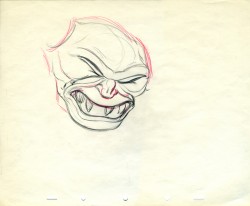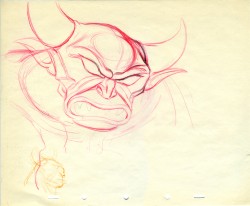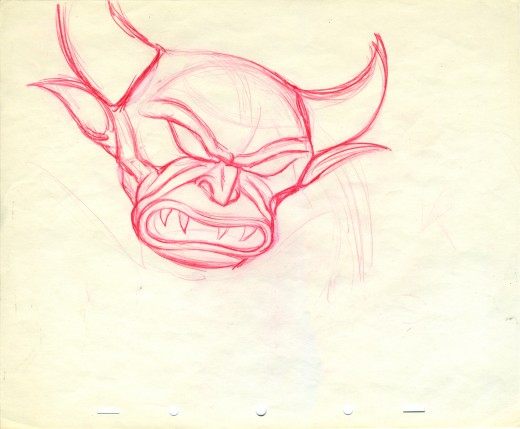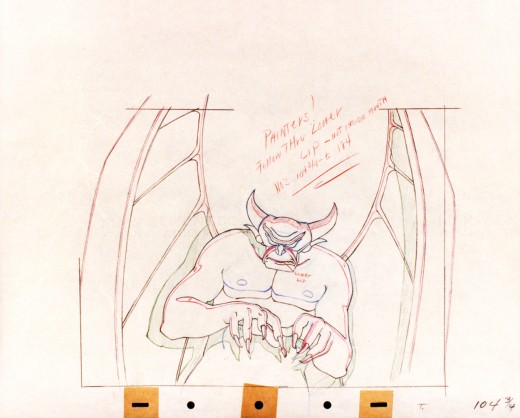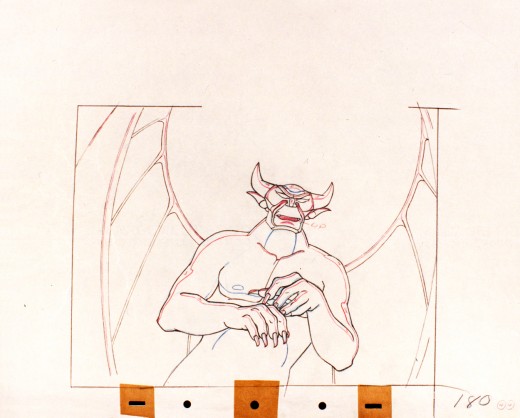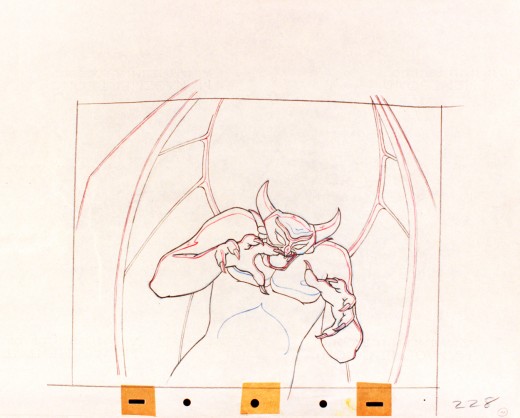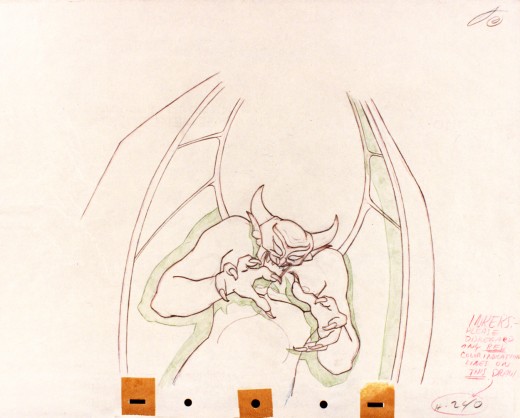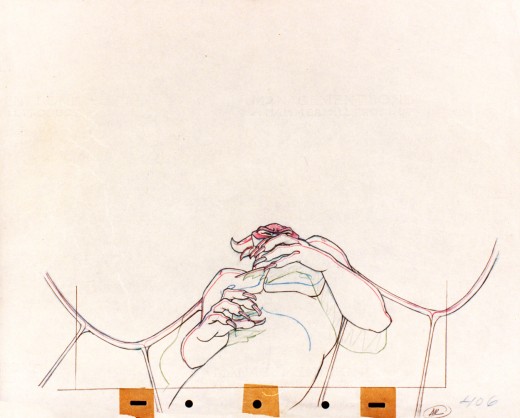Category ArchiveAnimation Artifacts
Animation Artifacts &Disney &Story & Storyboards 26 Sep 2011 06:47 am
Cockaboody Board – recap
- On October 10th the Motion Picture Academy will present a program of films by John & Faith Hubley. John Canemaker and Emily Hubley have assembled the program and although it is composed mostly of films by John (I’m not sure he would have been happy about that), there will be a lot of his early films like Flathatting (for the Navy) and The Magic Fluke and Rooty Toot Toot (for UPA.) There will also be recently restored prints of Adventures of an * and Tender Game as well as the late film, Voyage To Next. The show will have plenty of surprises of very rarely seen and hard-to-find material.
To reserve a seat go to Oscars.org. Academy members – $3.00. General Public – $5.00. or you can pay by mail with a form you’d get on line. Don’t wait; it’s probably sold out by now.
I will be posting as much of the Hubley art as I can in celebration of this show. To start with here’s the storyboard for Cockaboody.
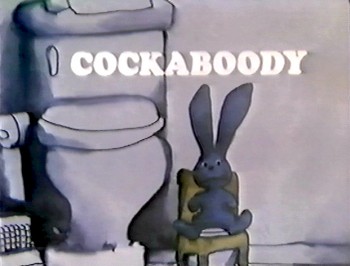 – I have a photostat copy of the storyboard to John and Faith Hubley‘s short film, Cockaboody. So I thought I’d post it to give a good demo of a storyboard from a master. The board was done in 1973.
– I have a photostat copy of the storyboard to John and Faith Hubley‘s short film, Cockaboody. So I thought I’d post it to give a good demo of a storyboard from a master. The board was done in 1973.
I had worked at Hubley’s for four months on Letterman and was layed off when that work ran out. They started preliminary work on Cockaboody while I was working on the feature Tubby The Tuba.
I left that project in time to get back to see the final scenes of Cockaboody colored, and I did a little animation of a rocking chair, with the two girls cradling it, at the film’s end. I didn’t do enough work on the film to receive credit, but I can still see my pencil lines on those two girls at the end of the film.
The film tells the story of two girls playing in a room next door to their babysitter. They laugh they cry they laugh they cry.
The audio track was improvised by Emily and Georgia Hubley in a recording studio years before they started the film. From the edited tracks a story was culled, and a storyboard formed. John did all of the drawings in storyboarding it.
There are 17 pages of board in all. I’ve inserted frame grabs so you can see how the final turned out. Tissa David animated the entire film.
The storyboard, with all of the drawings done by John, was developed in conjunction with the Hubley’s class at Yale. The students actively discussed the board and offered their participation in the growth of the film’s origin. A documentary was also produced showing the production of the animated short.
You’ll notice that the action in the film varies from the setups in the storyboard. This undoubted had to do with Tissa’s involvement. She would often rework things with John and alter the filmmaking. John, and most of the directors Tissa works with, was open to this. She has a masterful sense of camera placement and uses it throughout this film.
The film was an outgrowth of an early recording John and Faith made of their two daughters, Emily and Georgia. While teaching at Yale the Hubleys worked with the students in their class to help develop this storyboard. One of the students, Kate Wodell, came to work in the studio and was a mainstay there for many years and continued for a while helping Faith on many of her shorts after John died.
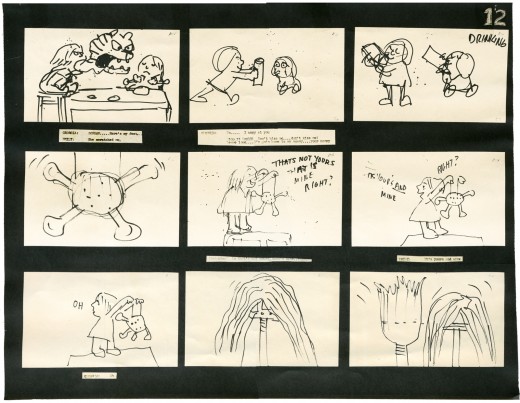
__
__
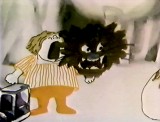 _
_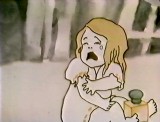 _
_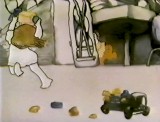
__
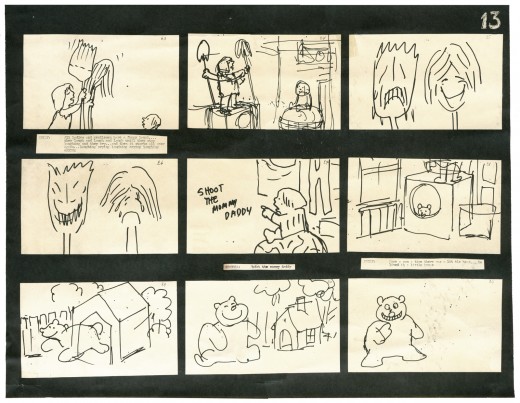
__
__
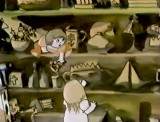 _
_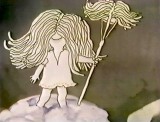 _
_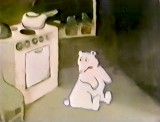
_
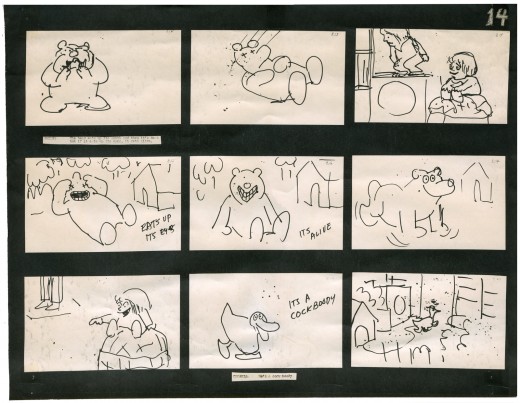
__
__
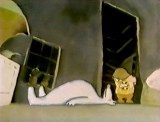 _
_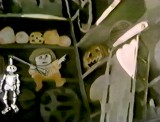 _
_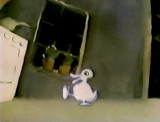
__
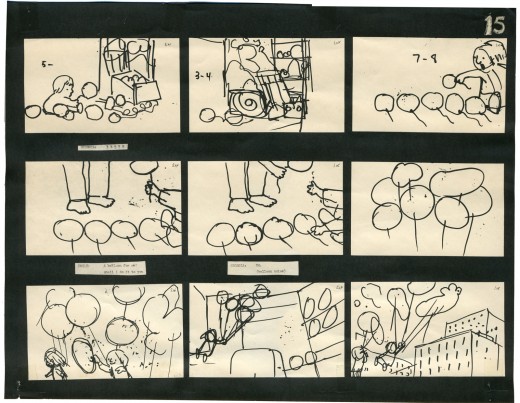
__
__
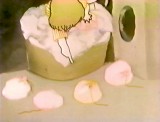 _
_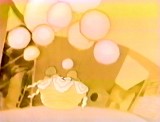 _
_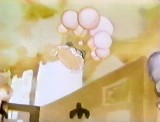
__
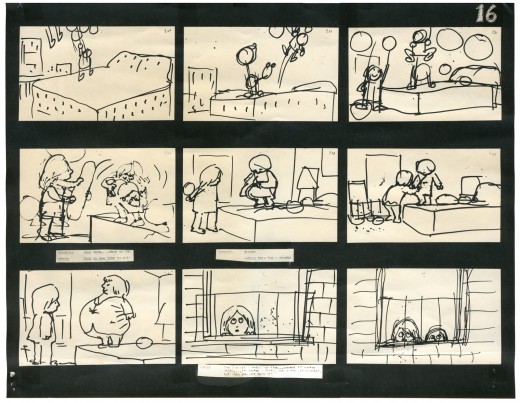
__
__
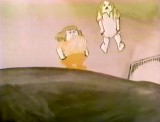 _
_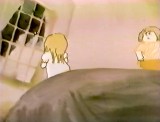 _
_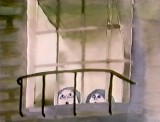
__
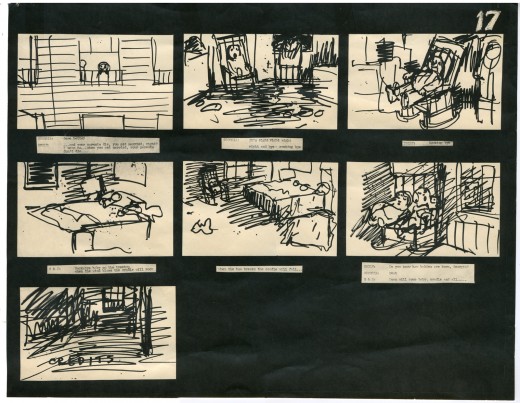
__
__
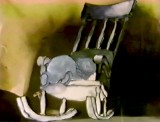 _
_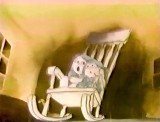 _
_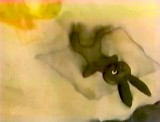
Animation &Animation Artifacts &Hubley &Independent Animation 21 Sep 2011 06:48 am
Marky’s walk – recap
After posting a large piece about Moonbird last Monday, I felt inclined to recap this Bobe Cannon walk from the film. I love it. Originally posted March, 2009
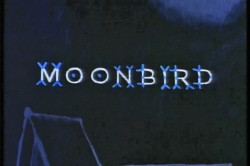 - If I had to choose who was my favorite animator, I’d have a tough time. Equal credit would probably have to go to three different people: Bobe Cannon, Tissa David and Bill Tytla. Ed Smith and Jim Tyer would fall just a smidgen below these three, for me. But there are none like them all, as far as I’m concerned.
- If I had to choose who was my favorite animator, I’d have a tough time. Equal credit would probably have to go to three different people: Bobe Cannon, Tissa David and Bill Tytla. Ed Smith and Jim Tyer would fall just a smidgen below these three, for me. But there are none like them all, as far as I’m concerned.
I’ve posted a lot of drawings from Tissa and Bill Tytla, but have very few drawings by Bobe Cannon (nor have I seen many published anywhere.)
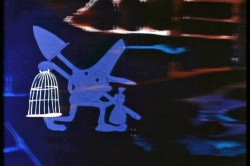 Here is a walk cycle from the beginning of Hubley’s monumental short, Moonbird. The odd numbers are extremes by Cannon, and the inbetweens (even numbers) were done by Ed Smith. Three different sized papers were used for this, and you can view them full sized if you click the thumbnails.
Here is a walk cycle from the beginning of Hubley’s monumental short, Moonbird. The odd numbers are extremes by Cannon, and the inbetweens (even numbers) were done by Ed Smith. Three different sized papers were used for this, and you can view them full sized if you click the thumbnails.
You’ll notice there’s paint all over the drawings. The ink & paint involved tracing the drawing, then using oil paints to cover all of the clear area in black. Some of that paint seeped onto the originals. In one drawing even to coloring the hat accidentally.
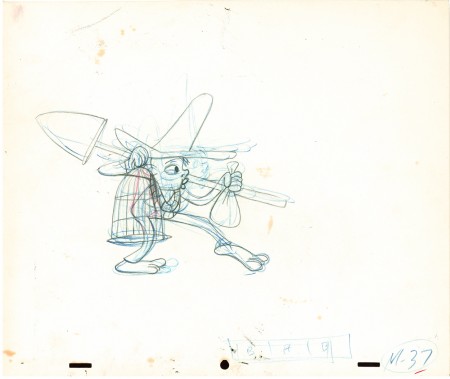 37
37(Click any image to enlarge.) “Marky” walk cycle from Moonbird
On twos at 24FPS
Click left side of the black bar to play.
Right side to watch single frame.
There’s a lot more to this scene including several variants on the walk.
At some future time, I’ll add the other drawings to show off the entire scene.
Animation &Animation Artifacts &Hubley &Tissa David 14 Sep 2011 06:51 am
Carousel’s Lovers – recap
This is one of my favorite sequences in the Hubley canon. Animated by Tissa David.
It’s worth a repost: the original appeared here in June, 2009.
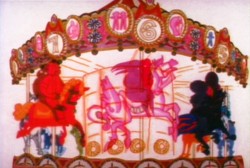 - Let’s take a look at the scene in Hubley’s Everybody Rides the Carouselwherein the young lovers have had a spat and try to have a romantic scene despite the fact that neither of them wants to do that.
- Let’s take a look at the scene in Hubley’s Everybody Rides the Carouselwherein the young lovers have had a spat and try to have a romantic scene despite the fact that neither of them wants to do that.
They’ve argued over the girl having cut her hair without telling the boy. He’s annoyed and she laughs at him. They push on to a frothy conversation. Both put on masks to continue the conversation while the inner characters
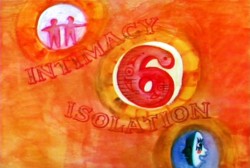 are annoyed and have an inner monologue. They get to the point where they can’t take the masks off and end pulling away from each other.
are annoyed and have an inner monologue. They get to the point where they can’t take the masks off and end pulling away from each other.
I’ve gathered John Hubley‘s layouts for this sequence. Tissa David animated them. You’ll note that the pencil numbers are a scene breakdown done in Tissa’s handwriting. The very loose drawings were done with a sharpie or pencil. The pencils would have been done while in handing it to Tissa during the conversation. They’re to delineate some point in greater detail for her.
I’ve also pulled some frame grabs so you can see how it was finally rendered. The coloring was done on vellum and shot bottom light. No more than 3 levels were used (including the background.) Tissa, aside from concerning herself with the dramatics of the scene, had to watch that the characters didn’t overlap. More complication for her.
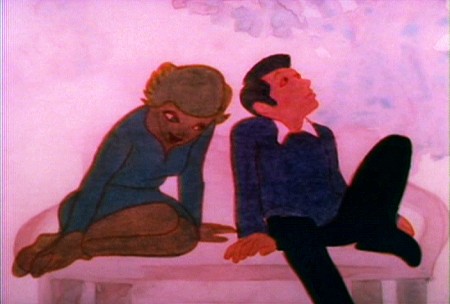
(Click any image to enlarge.)
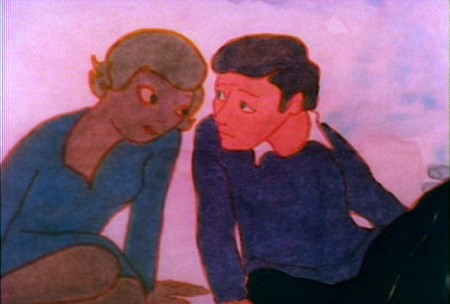
By the way, this was Meryl Streep’s first screen performance.
Charles Levin, another NY character actor, played the boy.
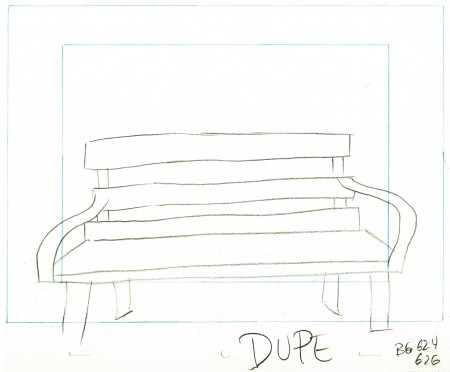
Here’s the park bench.
A quick rough copy by me to Tissa of John’s Bg LO.
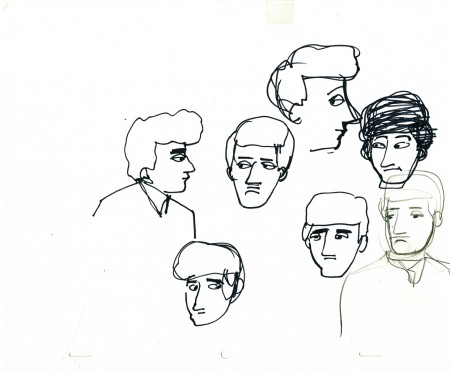
John’s model of the boy’s head for Tissa.
Animation &Animation Artifacts &Disney 07 Sep 2011 07:16 am
Thomas’ Mickey’s Tailor – recap
- This is the brilliant scene by Frank Thomas from the excellent Mickey short, The Brave Little Tailor. This scene is one of the highlights of that film. This scene made me realize how great an animator was Frank Thomas. For too many years I took his work for granted; this scene changed it all for me. I had to reevaluate everything he’d done.
In its entirety the scene’s about 250 drawings long, a long one. Many thanks to my friend, Lou Scarborough, for the generous loan of his xeroxed copies.
.
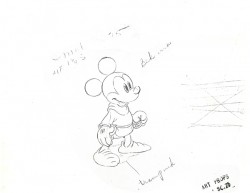 1
1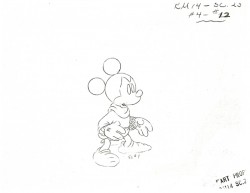 2
2
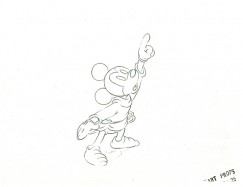 130
130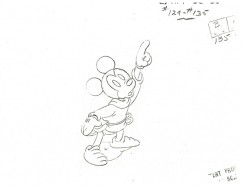 131
131
(Click any drawing to enlarge.)
The following QT movie represents all 246 drawings of the scene.
Click left side of the black bar to play.Right side to watch single frame.
Animation &Animation Artifacts &Disney &Tytla 31 Aug 2011 06:55 am
Tytla’s Laughing Gauchito – a recap
- In the past few weeks, I’ve been recapping all of the Bill Tytla scenes I’d posted in the past. This is the last of those done for Disney, and I’m pleased to have it back up again. I’ve taken both parts of the original post and have incorporated them into this one.
- In March of this year, I posted, in three parts, Frank Thomas‘ animation on the short that never went to completion, The Laughing Gauchito. John Canemaker brought me Bill Tytla‘s scene from this very film, and I’m posting all of the drawings here. As I’ve said, Frank Thomas animated his beautiful and emotional scene and Tytla did this one for a film that Disney, himself, cancelled. He felt it was too much a one gag story.
This one came with the exposure sheets!
You should look into J.B. Kaufman’s excellent book, South of the Border; it gives a full accounting of this film.
Here’s the artwork.
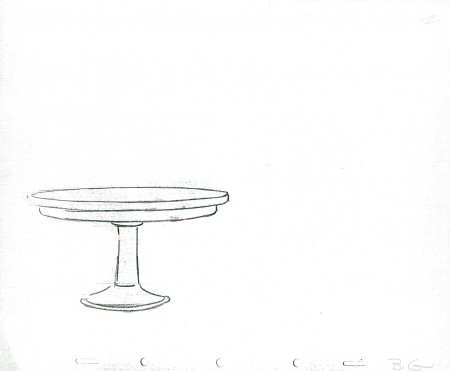
The Background
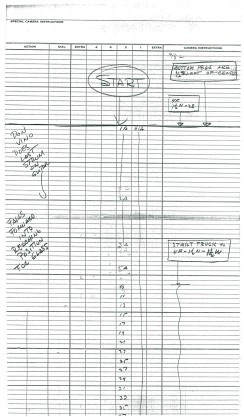 1
1 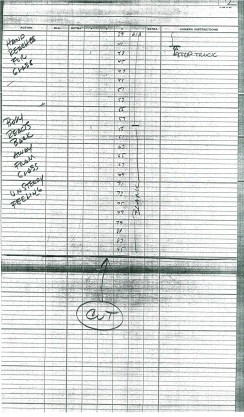 2
2
These are the X Sheets for the scene.
Here’s a QT of the scene with all the drawings included.
These are the links to the Frank Thomas scene: Part 1, Part 2, Part 3
Many thanks to John Canemaker for the loan of the scene.
Animation &Animation Artifacts &Disney &repeated posts &Tytla 24 Aug 2011 07:09 am
Baby Mine recap
To continue with all things Tytla, here’s a representation of the “Baby Mine” sequence from Dumbo. This is one of my very favorite sequences in one of my favorite animated films. The newish Blue Ray version of this film is excellent except for one thing. The commentary on this disc pales in comparison to the 60th Anniversary DVD. The original was done solely by John Canemaker and is enormously informative. I wish John would just turn that track into a book.
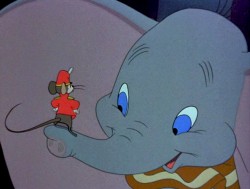 - Dumbo is certainly one of my favorite Disney features if not THE favorite. Naturally, the “Baby Mine” sequence is a highlight. The sequence is so tender and fine-tuned to appear straightforward and simple. This, of course, is the heart of excellence. It seems simple and doesn’t call attention to itself.
- Dumbo is certainly one of my favorite Disney features if not THE favorite. Naturally, the “Baby Mine” sequence is a highlight. The sequence is so tender and fine-tuned to appear straightforward and simple. This, of course, is the heart of excellence. It seems simple and doesn’t call attention to itself.
This is a storyboard composed of LO drawings from the opening of that sequence. They appear to be BG layouts with drawings of the characters cut out and pasted in place.
It’s not really a storyboard, and I’ve always wondered what purpose such boards served to the Disney machine back in the Golden Age.
Below is the board as it stands in the photograph.

_____________(Click any image to enlarge.)
Here is the same photographed board, split up so that I can post it in larger size. I’ve also interspersed frame grabs from the actual sequence for comparison.
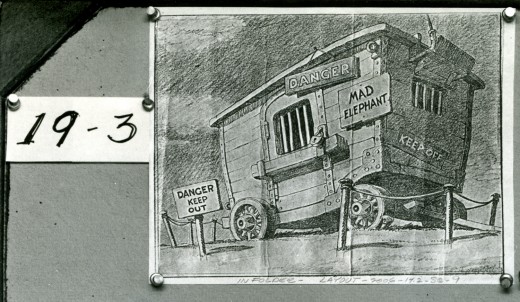
Thanks to Steve MacQuignon for locating this video.
Info from Hans Perk at A Film LA:
Directed by Bill Roberts and John/Jack Elliotte, assistant director Earl Bench, layout Al Zinnen.
Animation by Bill Tytla (Dumbo & Mrs. Jumbo’s trunk), Fred Moore (Timothy) and assorted animals by Bob Youngquist, Harvey Toombs, Ed Aardal and John Sewell.
Hans Perk has posted the drafts for Dumbo, and this has led Mark Mayerson to post the brilliant Mosaics he’s created for the film.
Animation &Animation Artifacts &Disney &repeated posts 17 Aug 2011 06:38 am
Dumbo’s Bath – recap
Continuing the celebration of Bill Tytla’s magnificent artrwork, I’m reposting this piece on Dumbo’s bath.
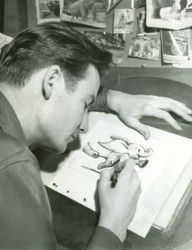 - Thanks to a loan from John Canemaker, I can continue posting some of the brilliant storyboard work of Bill Peet. The guy was a masterful artist. Every panel gives so much inspiration and information to the animators, directors and artists who’ll follow up on his work.
- Thanks to a loan from John Canemaker, I can continue posting some of the brilliant storyboard work of Bill Peet. The guy was a masterful artist. Every panel gives so much inspiration and information to the animators, directors and artists who’ll follow up on his work.
This is the sequence from Dumbo wherein baby Dumbo plays around the feet of his mother. Brilliantly animated by Bill Tytla, this sequence is one of the greatest ever animated. No rotoscoping, no MoCap. Just brilliant artists collaborating with perfect timing, perfect structure, perfect everything. Tytla said he watched his young son at home to learn how to animate Dumbo. Bill Peet told Mike Barrier that he was a big fan of circuses, so he was delighted to be working on this piece. Both used their excitement and enthusiasm to bring something brilliant to the screen, and it stands as a masterpiece of the medium.
Of this sequence and Tytla’s animation, Mike Barrier says in Hollywood Cartoons, “What might otherwise be mere cuteness acquires poignance because it is always shaded by a parent’s knowledge of pain and risk. If Dumbo “acted” more, he would almost certainly be a less successful character—’cuter,’ probably, in the cookie-cutter manner of so many other animated characters, but far more superficial.”
I had to take the one very long photstat and reconfigure it in photoshop so that you could enlarge these frames to see them well. I tried to keep the feel of these drawings pinned to that board in tact.
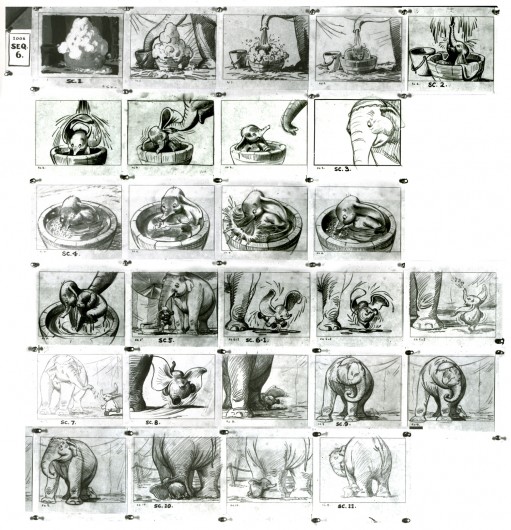
(Click any image to enlarge.)
Here are frame grabs from the very same sequence of the film showing how closely the cuts were followed. Even in stills the sequence is stunning.

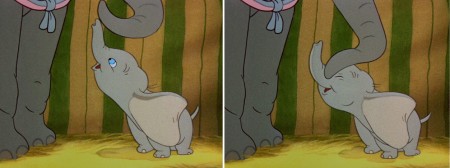
(Click any image to enlarge.)
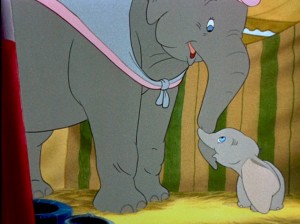 .
.This film is a gem.
The dvd also has one of my favorite commentary tracks throughout.
John Canemaker, by himself, talking about the film. It’s great!
From Hans Perk’s A Film LA:
Seq. 06.0 “Menagerie – Mrs. Jumbo Goes Berserk”
Directed by Wilfred Jackson, assistant director Jacques [Roberts?], layout Terrell Stapp.
Dumbo being washed by Mrs. Jumbo, animated by Bill Tytla, with effects by Art Palmer, Cornett Wood and Sandy Strother.
Animation &Animation Artifacts 12 Aug 2011 07:10 am
Corny’s Cartoon
Since Corny Cole died on Monday, there have been quite a few comments on various blogs. To me, the most valuable of those I’d seen was the one posted late yesterday by Michael Barrier. It is an interview done with Milton Gray and Corny in 1991. They talk primarily about the days Corny worked under Chuck Jones at Warner Bros. and the days working at UPA on Gay Purr-ee, under the recommendation of Jones. Amid Amidi also posted a fine memorial to Corny on Cartoon Brew this morning.
I have a few scenes done by Corny Cole from Raggedy Ann and Andy, and I hope to post some of his art. However, animator, Matthew Clinton sent me the following scene and offered it for posting. Matt had a close relationship with Corny and I thought the scene somehow special. Somehow, to me, it captures the essence of Corny’s animation, so I thought it appropriate to post this week. Here’s the comment Matt sent along with the artwork:
- Corny Cole gave this scene to me as a gift when I graduated. I’m guessing that it was something he worked on in his “Animation as Art” class while the students were busy drawing one day. Maybe it was for a demonstration. I included scans of all the drawings.
Corny talks, in the Barrier interview, of animating just by flipping without a bottom light. It’s easy to imagine him sitting in the front of the classroom flipping away with this artwork on his lap. It’s obviously stream of conscience. There are elements of some of Corny’s last big jobs in there: the taffy pit from Raggedy Ann and the clockwork mouse (a Disney/Mickey bastardization) from The Mouse & His Child, both features designed by Corny.
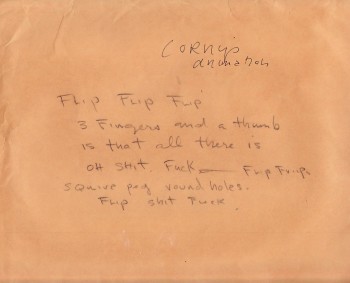
Cover sheet
. . . . . . . . . . . . . . . . . . . . . . . . . . . . .
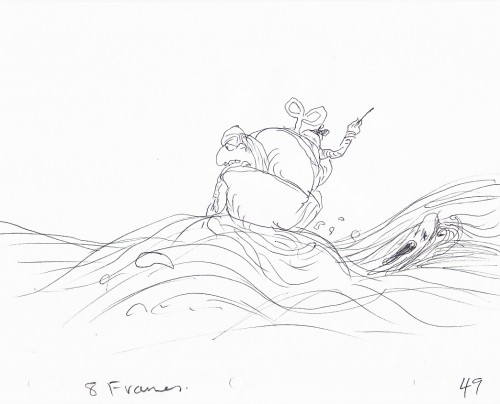 49
49
The clockwork mouse about to be swallowed by the Taffy Pit.
.
This is a QT of Corny’s piece. Since most drawings were exposed on 6′s,
I put one frame dissolves between each to soften the extremes.
Animation Artifacts &Books &Commentary &Disney 11 Aug 2011 06:52 am
Response
- On Tuesday, I’d posted a review of Timothy Susanin‘s excellent book, Walt Before Mickey: Disney’s Early Years 1919-1928. I loved the book and, in fact, worried that I was being too critical. I did tend to go on quite a bit about the details on details within the book.
To my surprise I’d received an email response from Mr. Susanin, and I asked him if he would mind my posting his letter. He immediately gave me permission and here’s his response to my review:
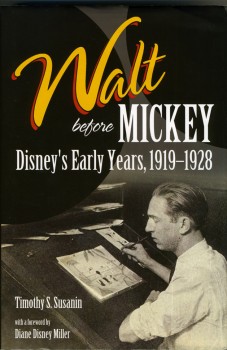 Dear Mr. Sporn,
Dear Mr. Sporn,
Many thanks for reading my book; for writing a review; and for your kind words.
I can’t tell you how much fun I had learning the story of Walt’s first decade. It was a most enjoyable and unexpected hobby, and I am sorry it’s over!
I am biased about Walt, of course, so I found the subject matter thrilling and a page turner, like you.
Your review is dead on in a number of respects. I am a Disney fan, not an animation expert, thus I was not equipped to search for the art, as were J.B. and Russell. Being a lawyer who has done many investigations, and written many detailed factual reports based on investigations, I was simply all about finding out what happened during Walt’s “missing decade.”
There was a reference in the Laugh-O-gram bankruptcy file to a studio “minute book,” and I would have been thrilled had a daily diary of any or all of that decade still existed! For me, following Walt day by day was the way to learn the real Walt and to see how he really got started.
So for me, a novice author and biographer — and maybe this notion would not be acceptable to other, experienced authors and biographers — there was real worth in learning all of the detail you mention in your review. Because no daily account existed, trying to find out at least what he was doing on a monthly basis helped bring this period alive for me.
The overload of detail — again, for me — allowed the physical spaces he occupied, the friends and colleagues, the look and feel of the period, the films produced to all come together and create a real portrait of that missing decade.
I agree that the question is: is this a viable biography for others outside this “niche market?” I didn’t set out to write a book, and once a book resulted, it was the book I would have wanted, because of the level of detail I wanted to know in order to really learn that period of Walt’s life. So, it worked for me!
And, as you point out, there were limitations. I had no budget. I had no publisher until the book was finished. I was not sure until near the end of the process that the Disney Company would provide photos.
So….this was very much a project where I was limited to take what others had done
and try to build on it, add facts to it, string things together, on my own and in my
spare time —- evenings and weekend.
I pulled all this together to learn about Walt in the 1920s. The info turned into a timeline that turned into a more detailed chronology that turned into a book. Along the way, I tried to find answers to whatever questions I had so that the blanks could be filled in.
I think what resulted is a work that I would have loved to come across in a book store or in a library, along with the realization that others would feel the same way, but maybe not a lot of others!
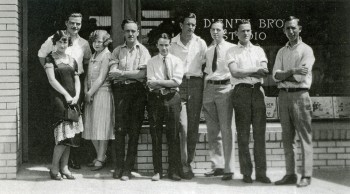 In the end, I got a real sense of who Walt was; what the first ten years of his career were like; how they set the stage for the rest of his career; and how a lot of his original collaborators fit into the big picture. It really sets the table nicely for me to now go on and read and learn about Walt in the 30s, 40s, etc.
In the end, I got a real sense of who Walt was; what the first ten years of his career were like; how they set the stage for the rest of his career; and how a lot of his original collaborators fit into the big picture. It really sets the table nicely for me to now go on and read and learn about Walt in the 30s, 40s, etc.
Unlike you, I did not want the book to go on. After six years and many rewrites and endless proofreading, I wanted it out the door and almost got sick of it! Maybe you can predict what happened after that: I now find myself wondering with increasing frequency about the spring of 1928, and what happened —- in a detailed way, on a daily or monthly basis! —- as Mickey appeared on the scene.
I thought that I would have nothing further to contribute to the Disney canon because, from Mickey’s appearance in 1928 til today, enormous amounts have been written about Walt’s story. Unlike the “missing decade” of the 1920s, the record is complete as far as the other decades of Walt career are concerned.
And yet….I find myself getting the urge to dig into the spring of 1928 and see where that takes me.
I don’t really know if I have another book in me, but my mind is starting to wander in that direction. I’ll keep you posted!
Many thanks again for your interest and your review.
Boy, do I hope he comes up with something about those several months between the start of Plane Crazy and the premiere of Steamboat Willie. Can you imagine the pressure on Walt and Roy? They’d just been robbed of their staff and had lost a semi-lucrative job doing Oswald cartoons. They create a mouse character, and no one wants the first short. So they do a second film starring Mickey, and still they can’t sell it. They do a third one trying to capitalize on the incoming sound transition. They show the film at one theater – for free – just to get it in front of an audience. Success! That short period is a tale in its own, and it’s never really been covered by writers.
In the photo, above: LtoR – Irene Hamilton (Inker), Rudy Ising, Dorothy Manson (Inker), Ubbe Iwerks, Rollin Hamilton, Thurston Harper, Walker Harman (Inker), Hugh Harman, Roy Disney. Walt took the photo.
On to something else that’s related. Mark Sonntag on his extraordinary blog, Tagtoonz, has posted some rarely seen photos of the first days of Disney’s filming in Kansas City. After posting the one photo of Walt directing and Red Lyon filming the Cowles children in 1922, he was contacted by a member of the Cowles family, and they offered additional photos. Take a look.
Animation &Animation Artifacts &John Canemaker 03 Aug 2011 05:36 am
Tytla Devil Recaps
Continuing with my recaps of Bill Tytla’s Disney animation, I’ve put together a couple of past posts to show you some of the beautiful drawing Tytla did on Fantasia‘s Night On Bald Mountain sequence.
- Here’s what for me was a real treat to scan and post. I had some limited access to actual drawings by Bill Tytla of the Devil from Fantasia. The drawings are mostly roughs by Tytla, and they give a good sample of what his actual work looked like.
I don’t need to write about it; let me just give you these mages.
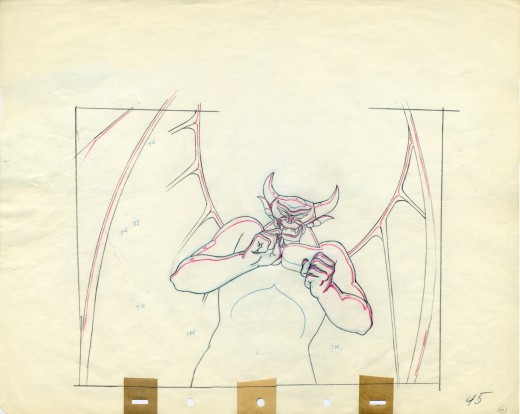
A good example of a Tytla drawing.
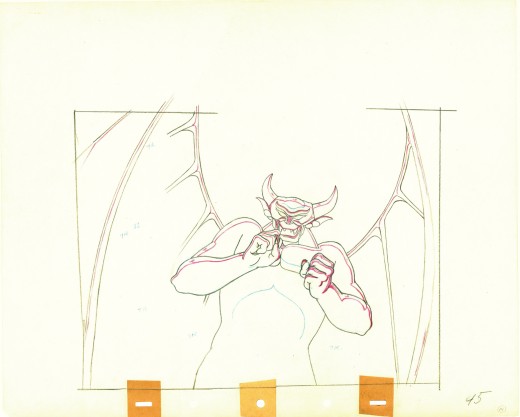
Here’s the clean up of the same drawing.
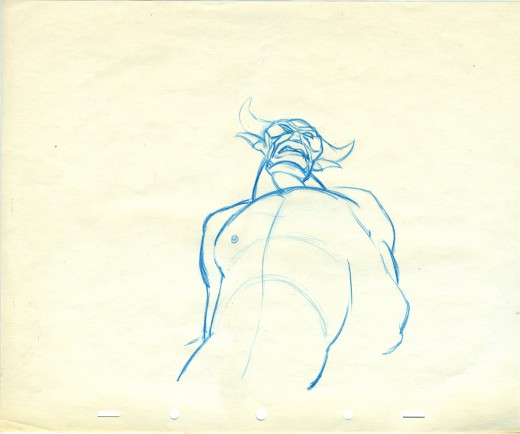
Animation roughs don’t get any more beautiful than this.
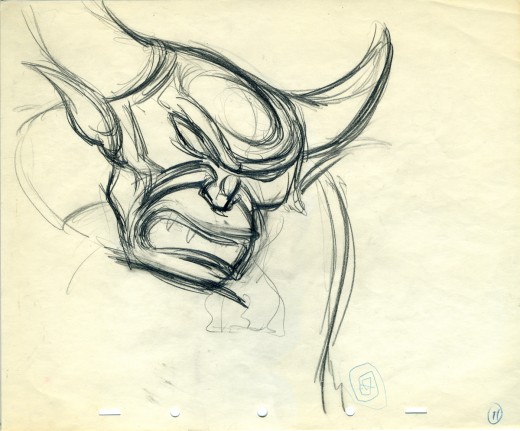
Art. What else need be said?
The individual drawings are stunning, and they’re
in service to a brilliantly acted sequence.
It will never get better.
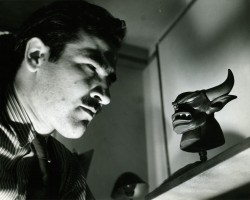 - Going under the assumption that there never are enough of Tytla’s Devils on the internet, I’ve got a few drawings to show here.
- Going under the assumption that there never are enough of Tytla’s Devils on the internet, I’ve got a few drawings to show here.
These were photographs of drawings taken (rather dark exposure that I lightened a bit) of what appears to be some cleanups. Most of them are from one scene; one drawing is from another. They’re all treasures.
How do you go from delicate Dumbo’s bath to this? That’s acting!
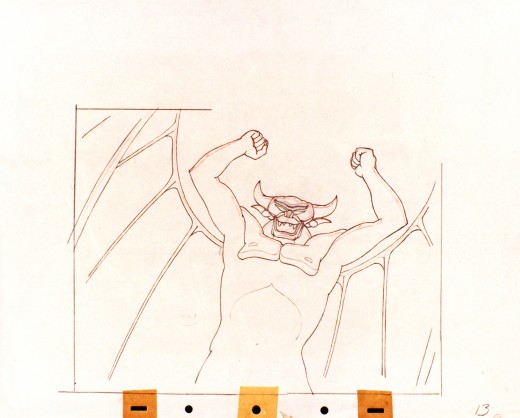
(Click any image to enlarge.)
